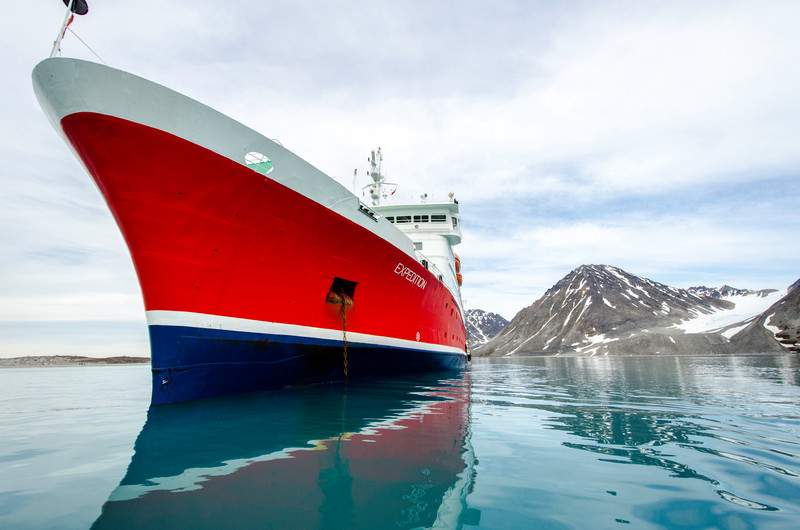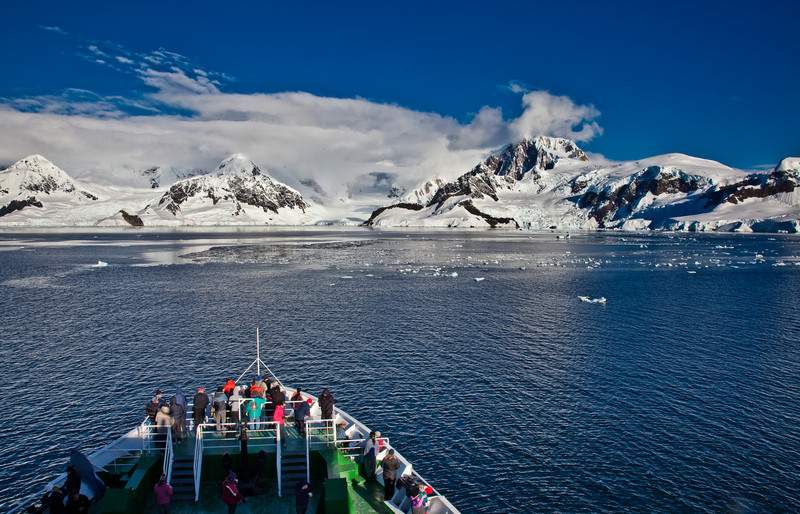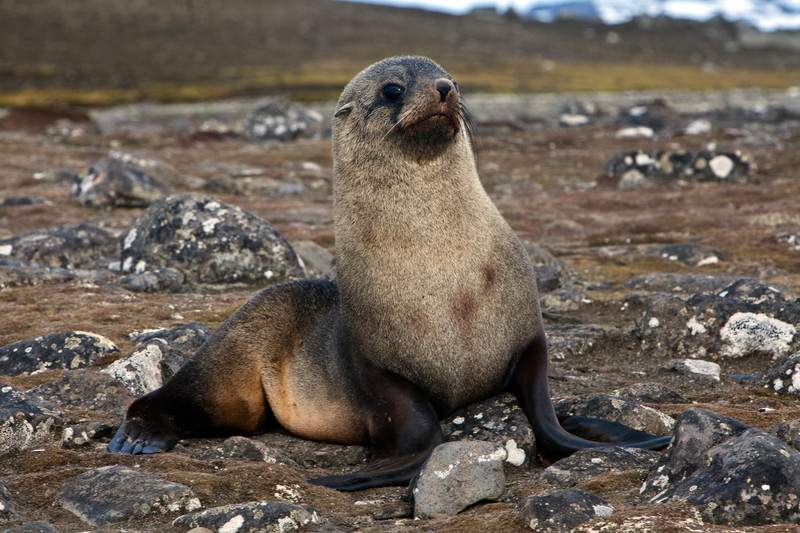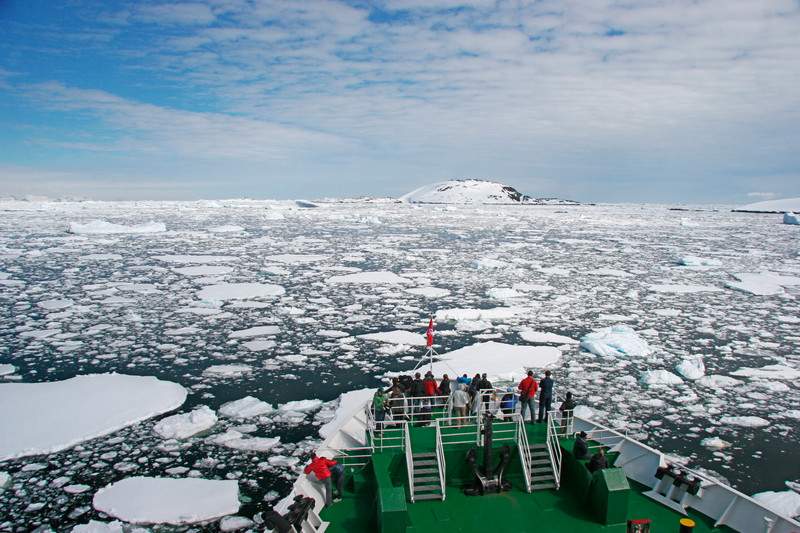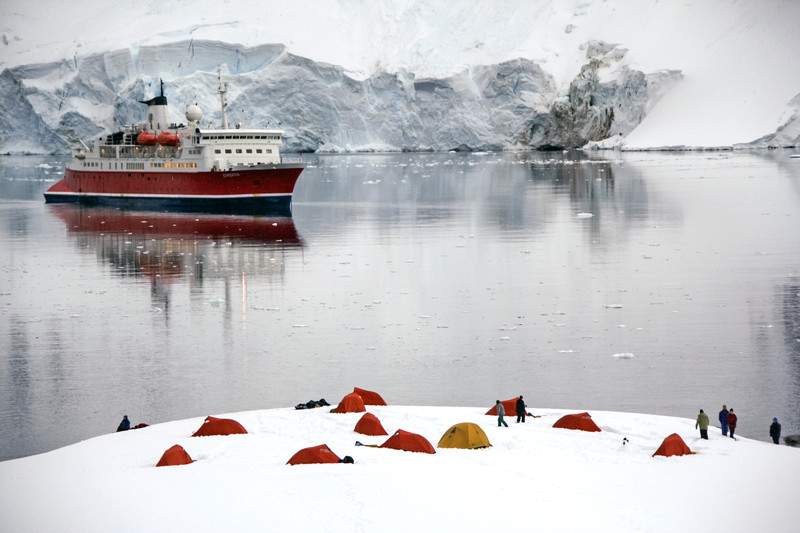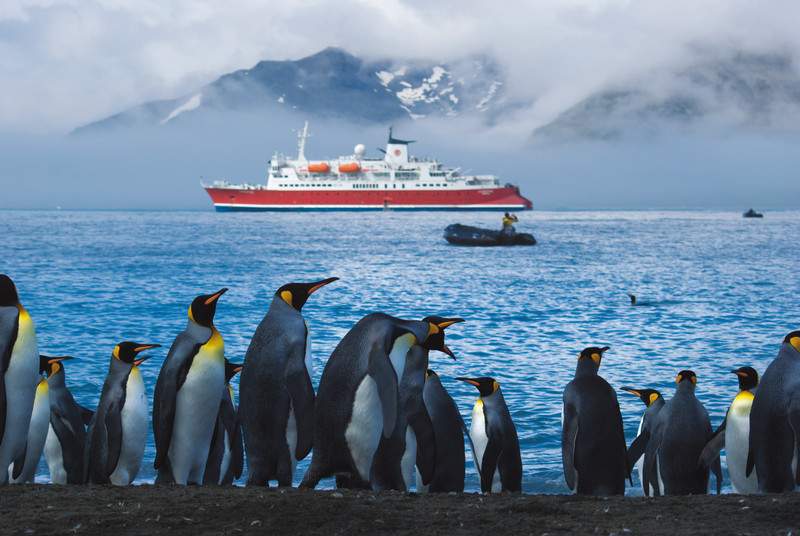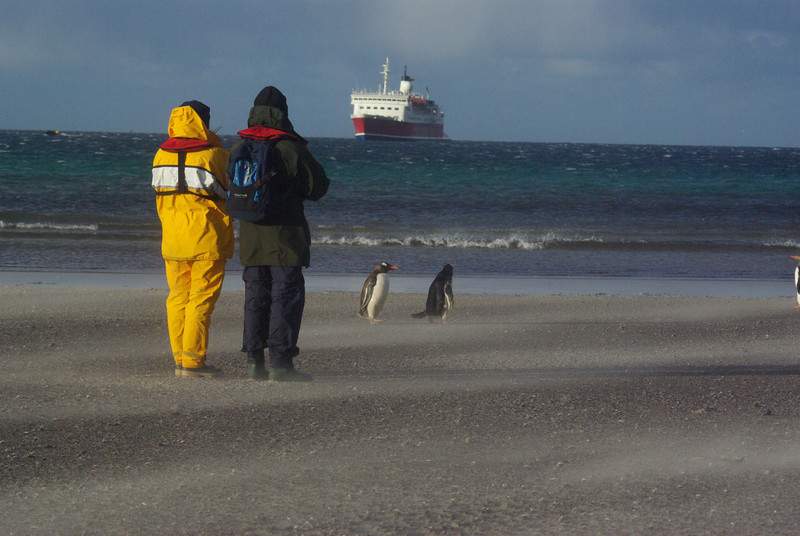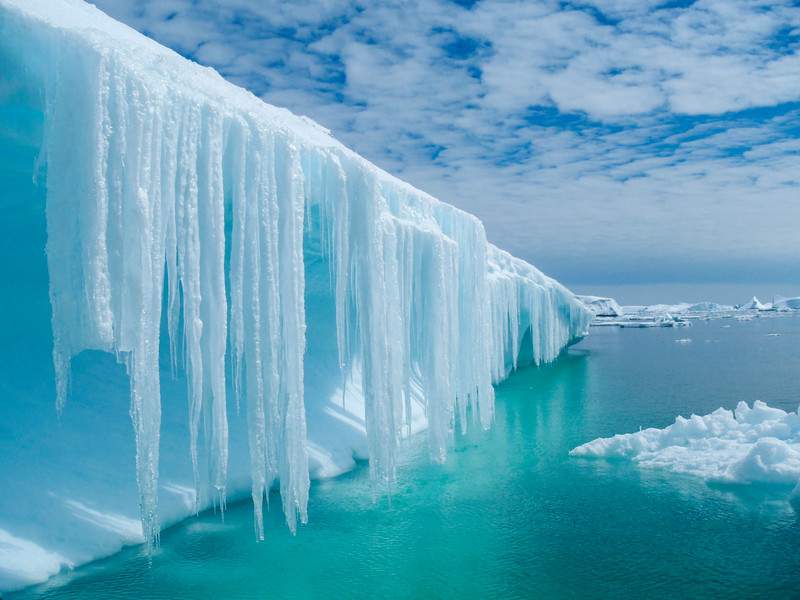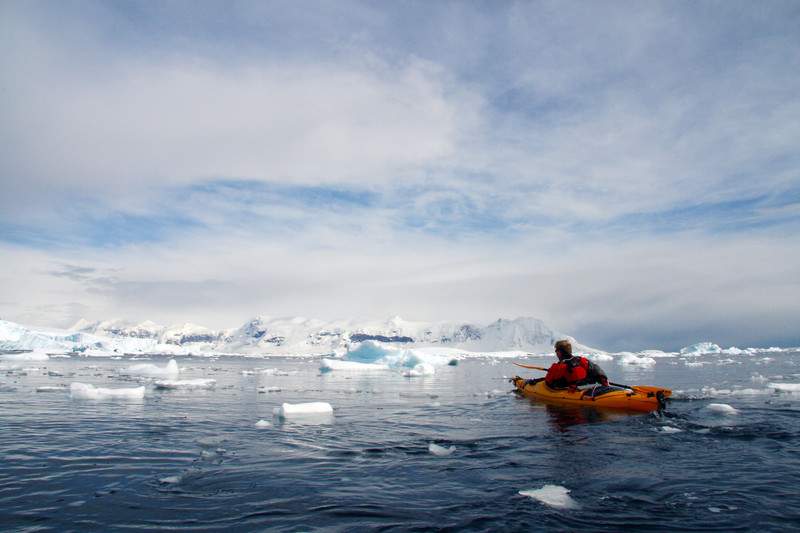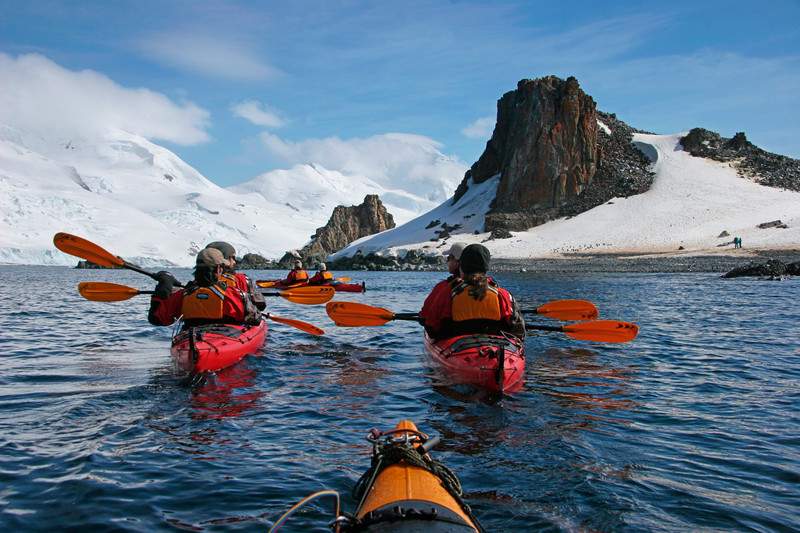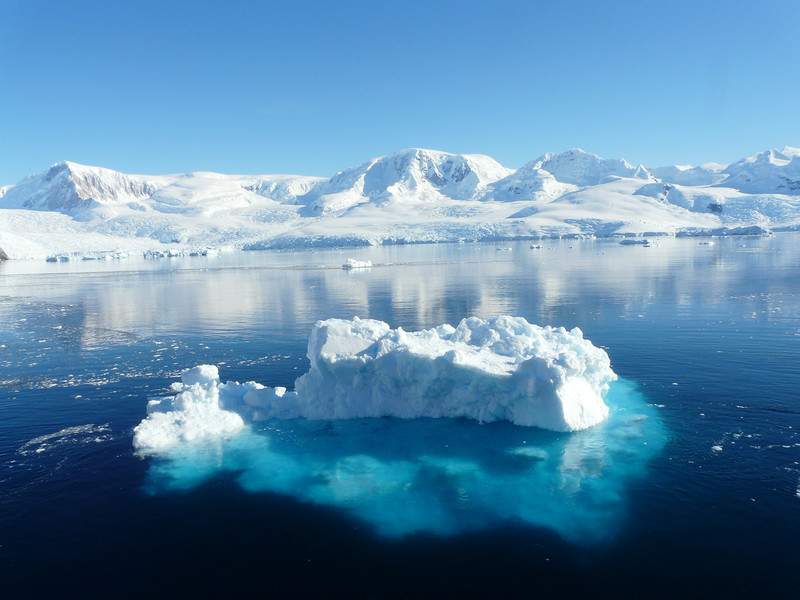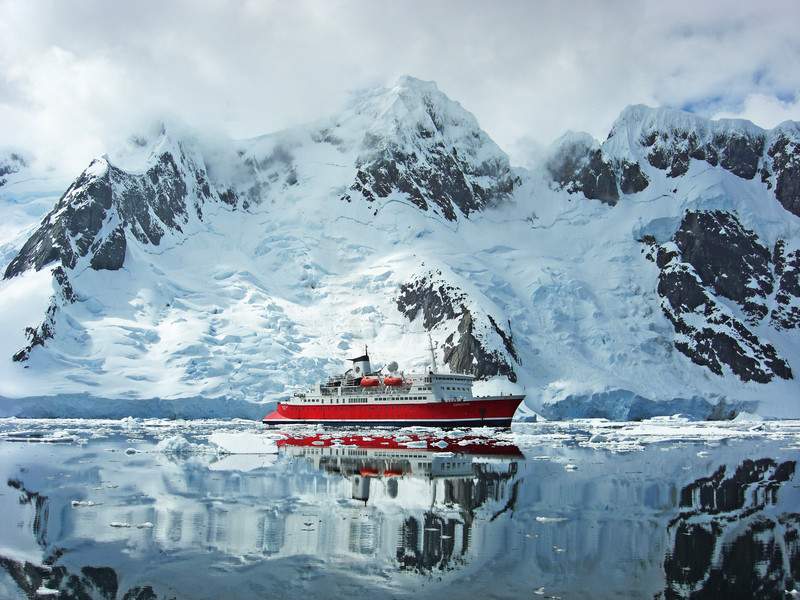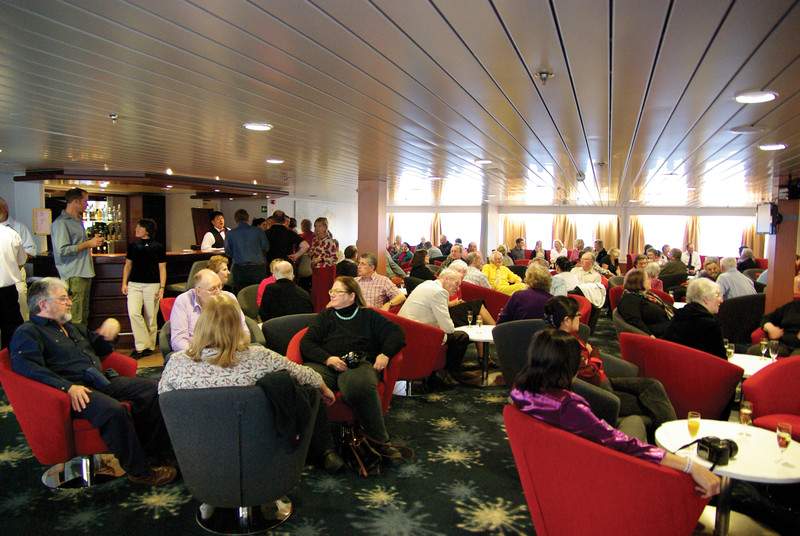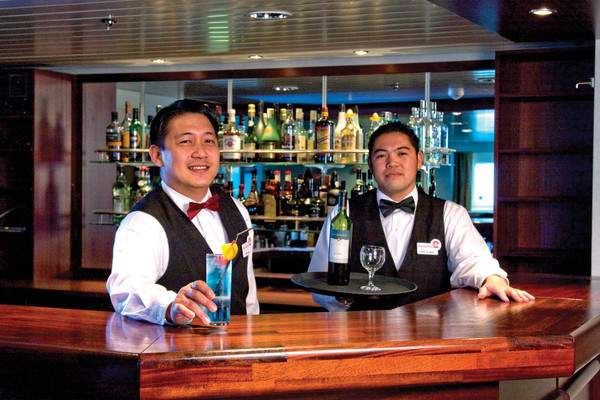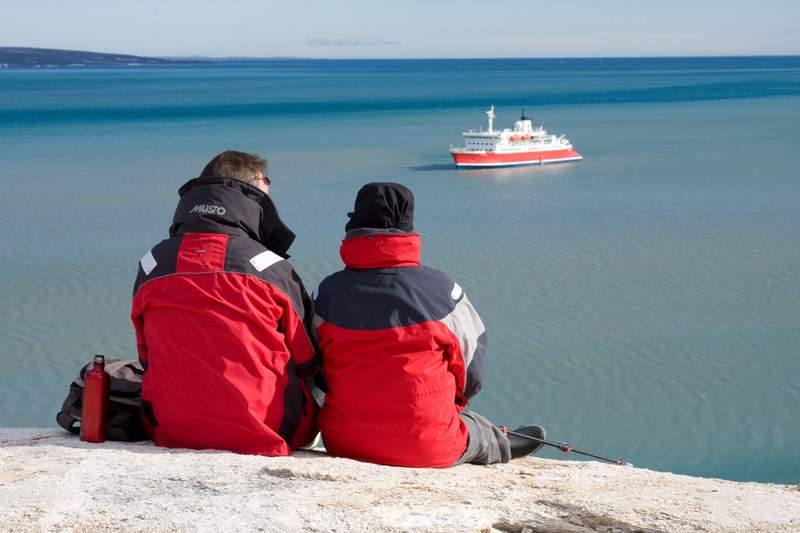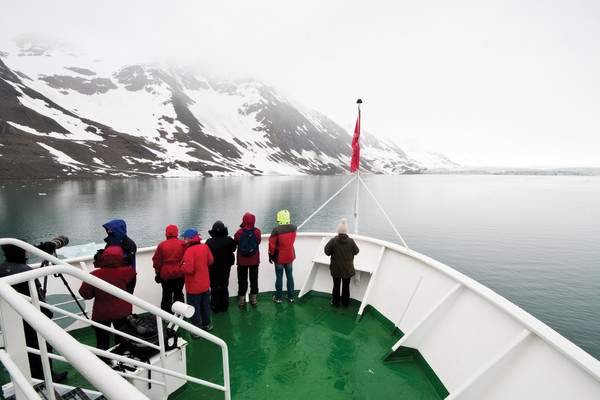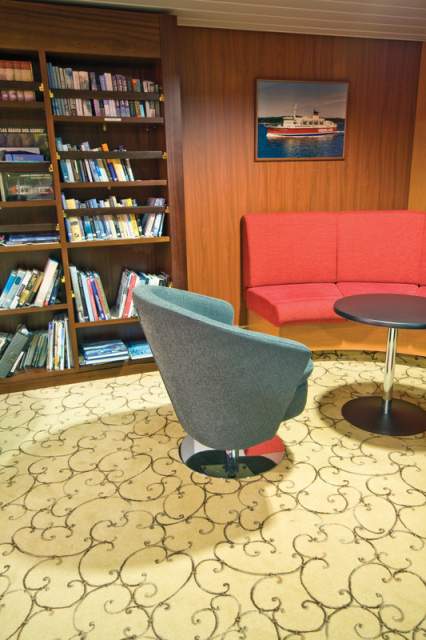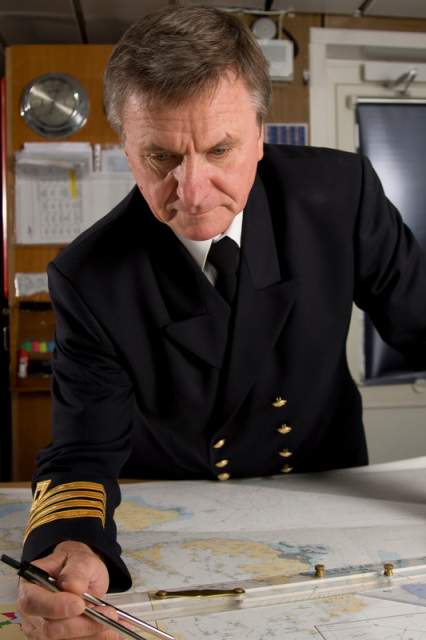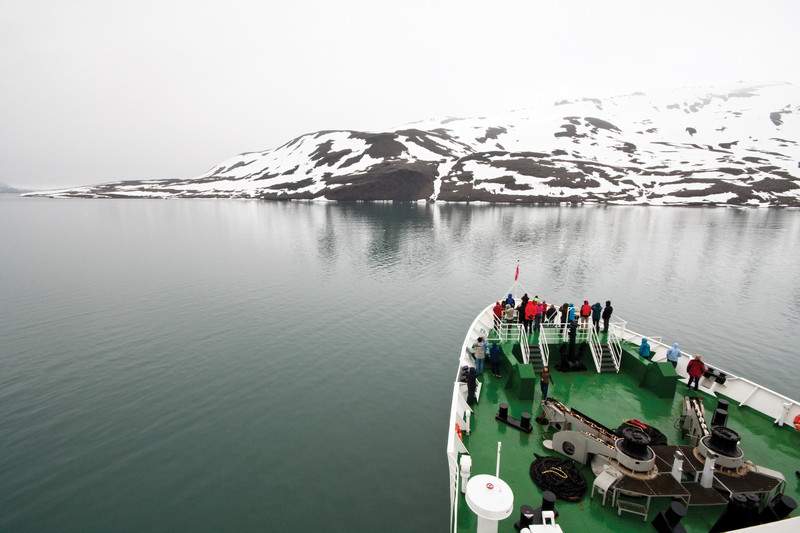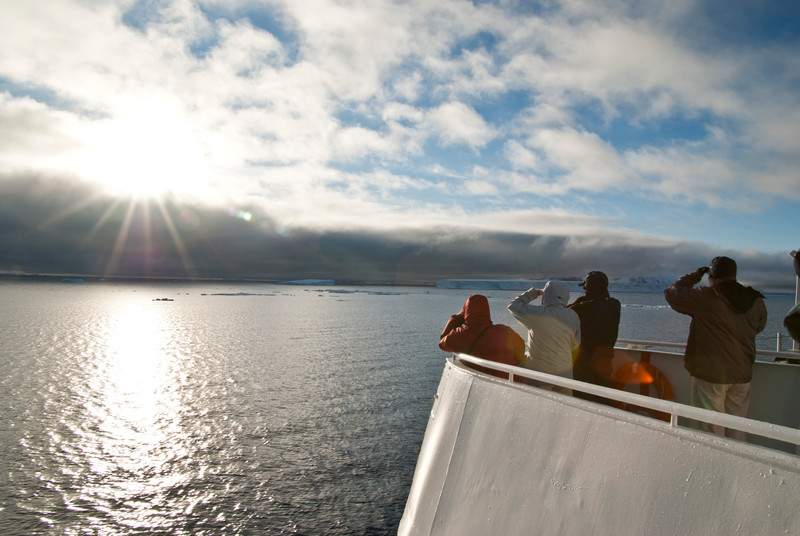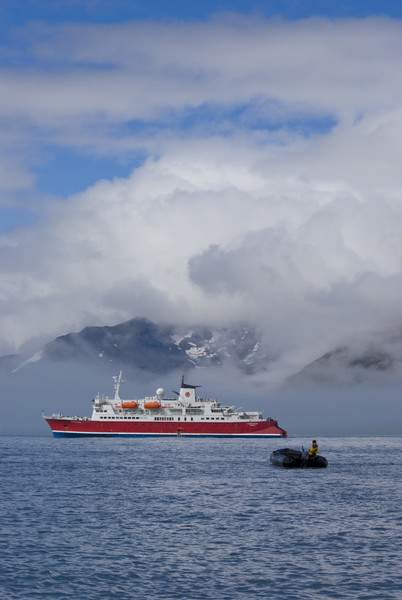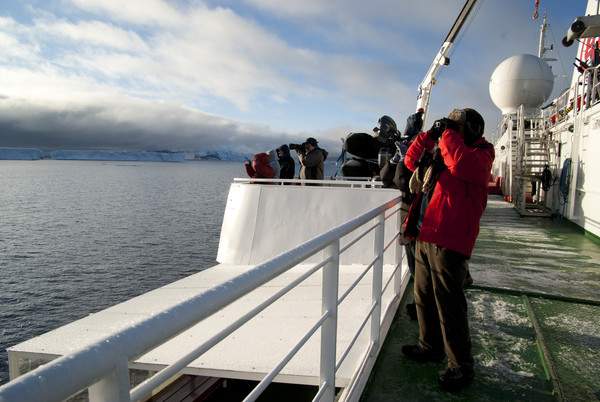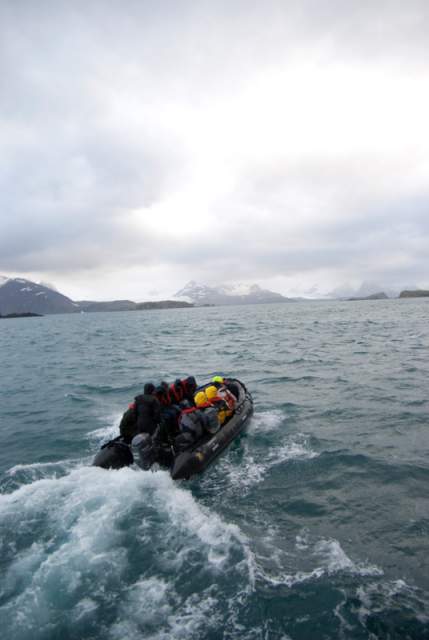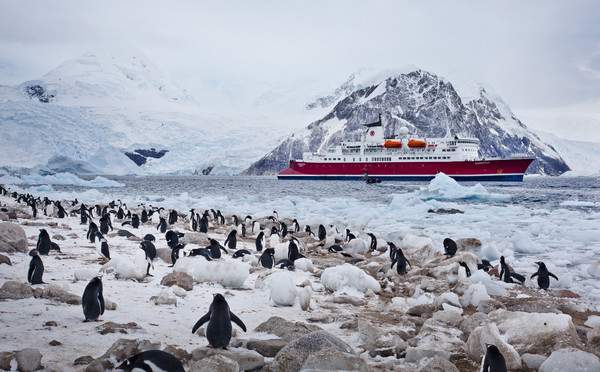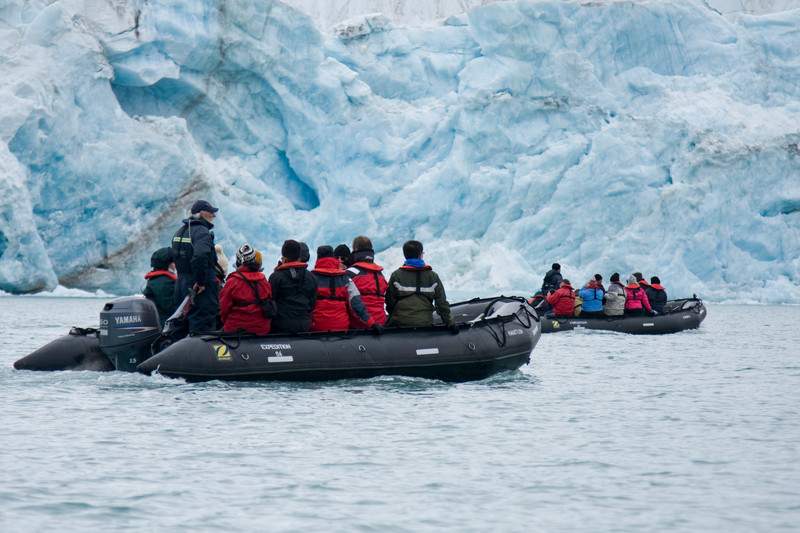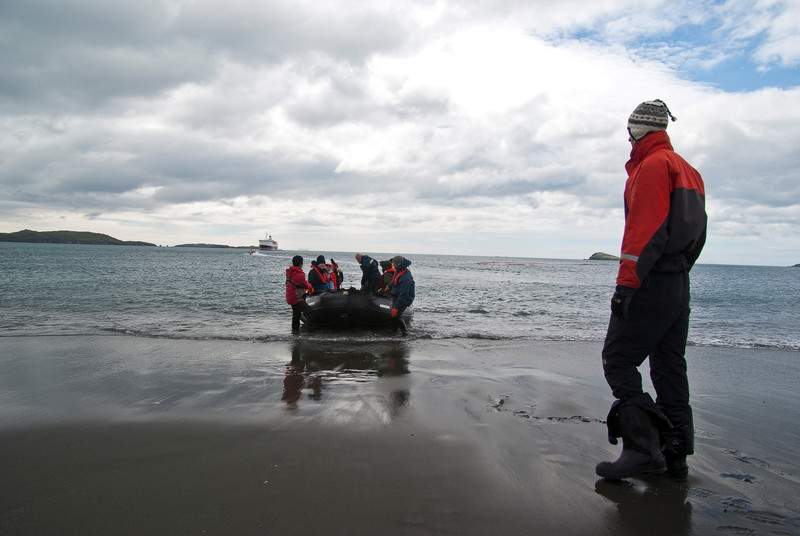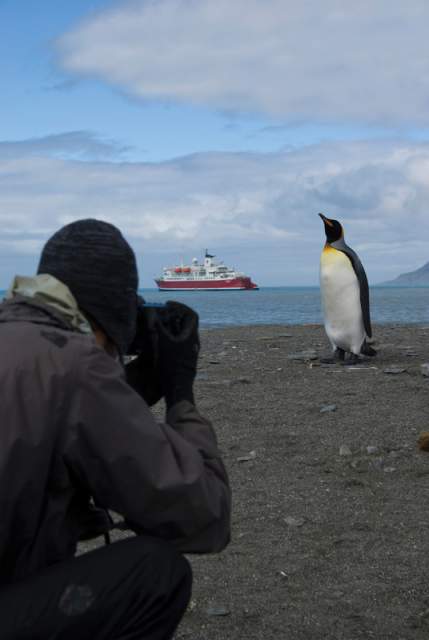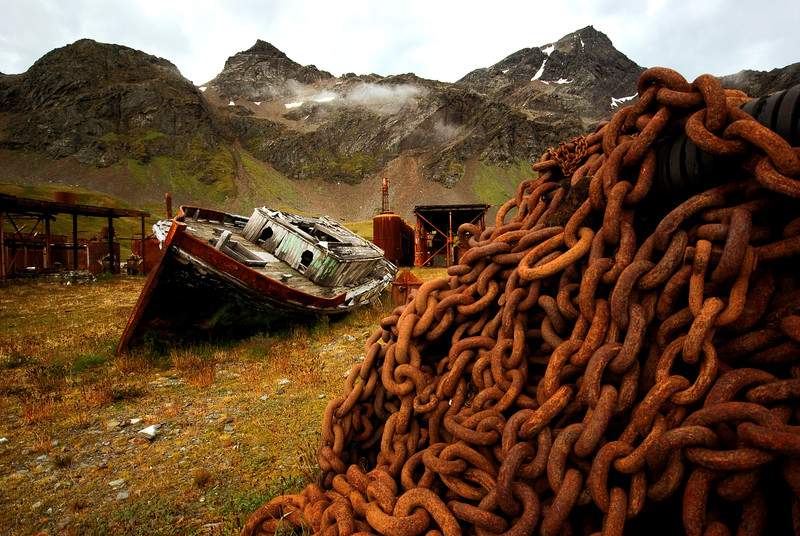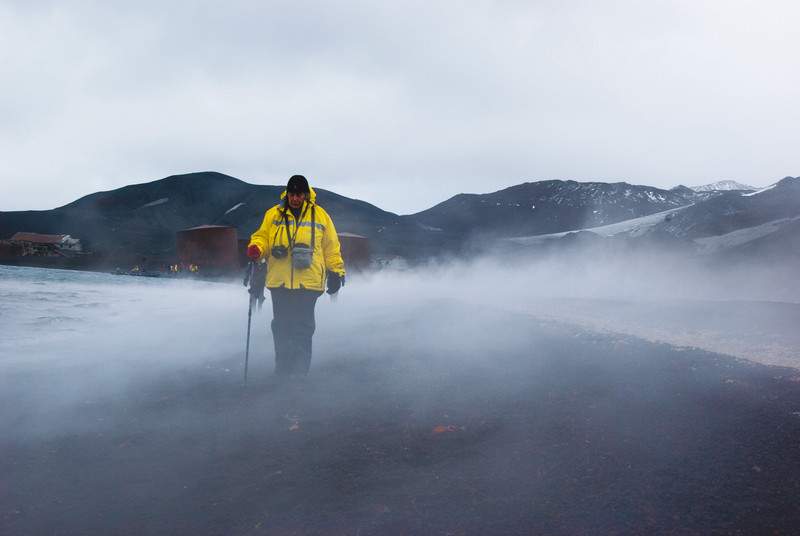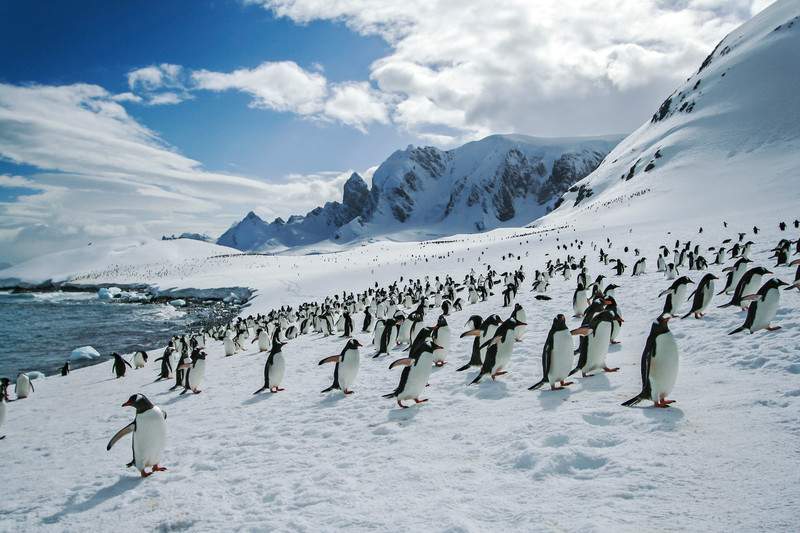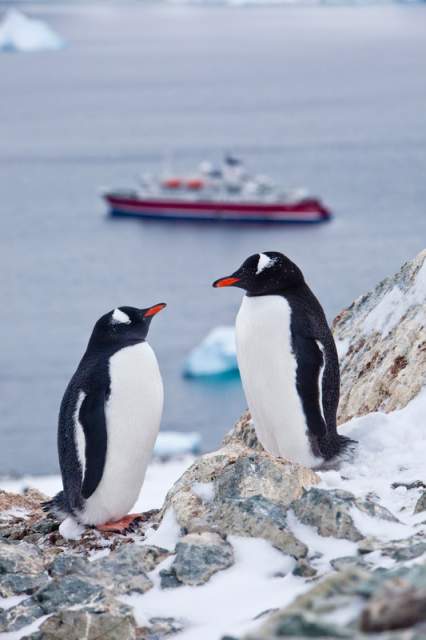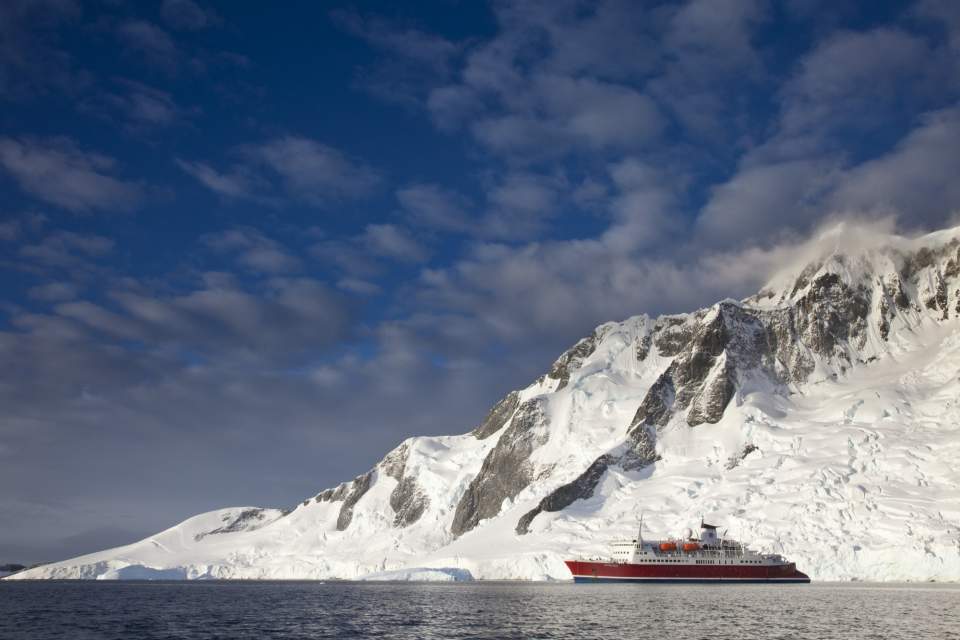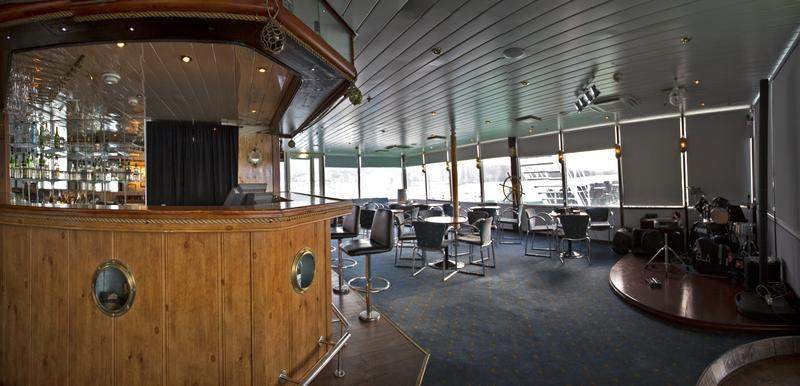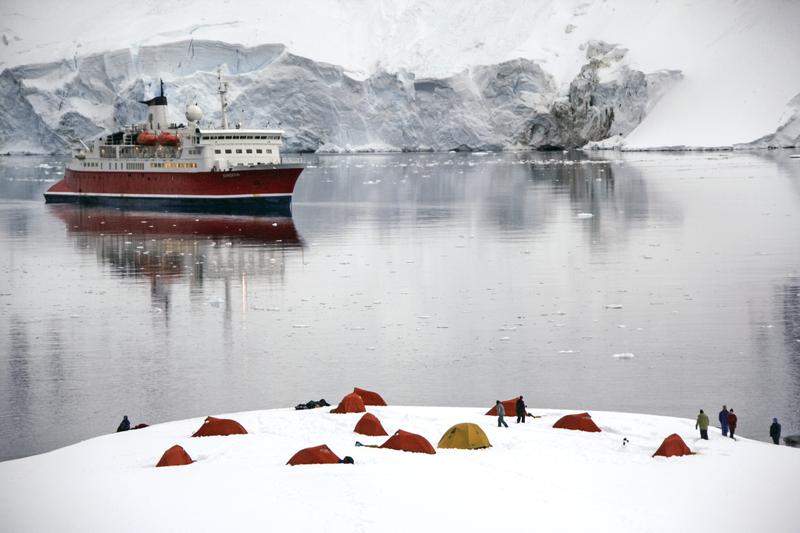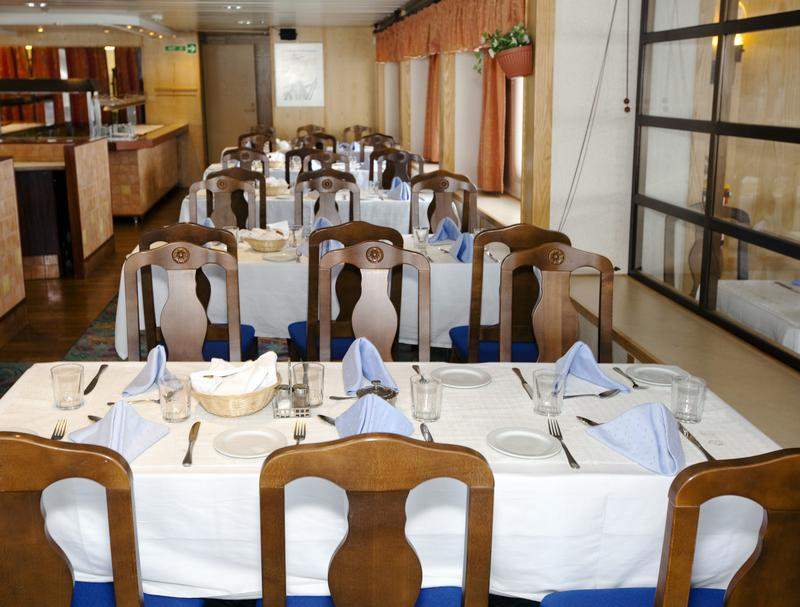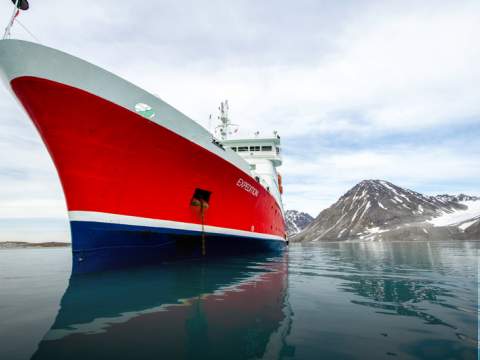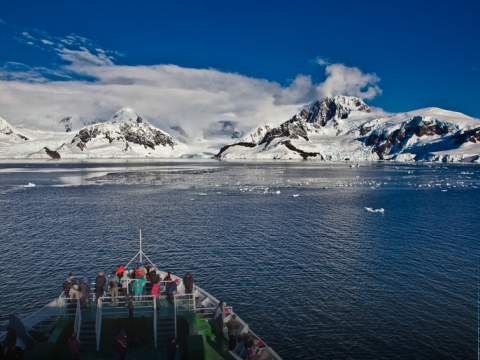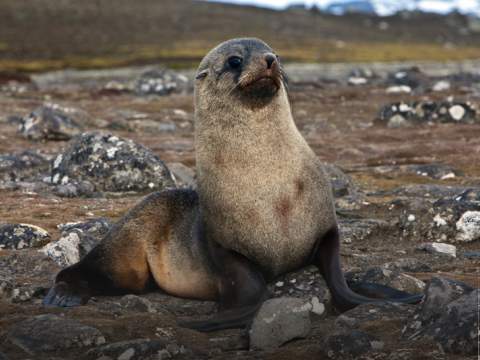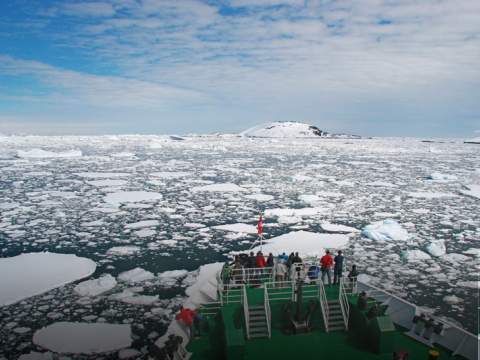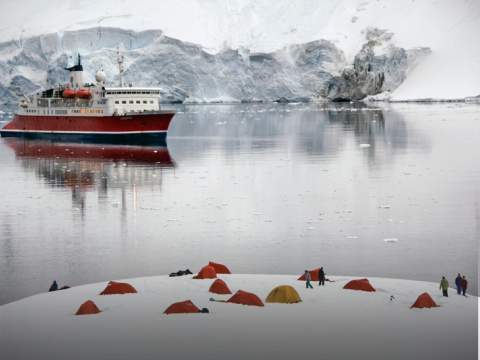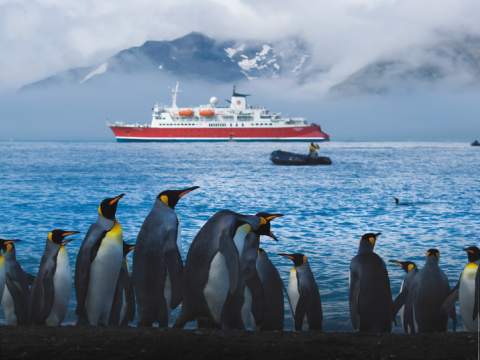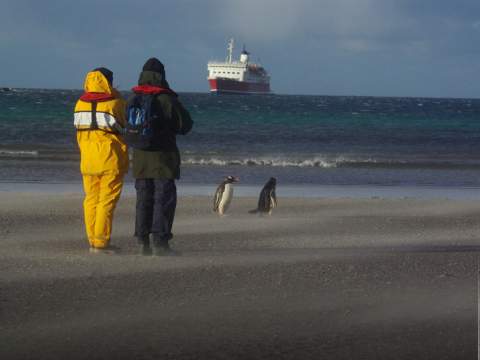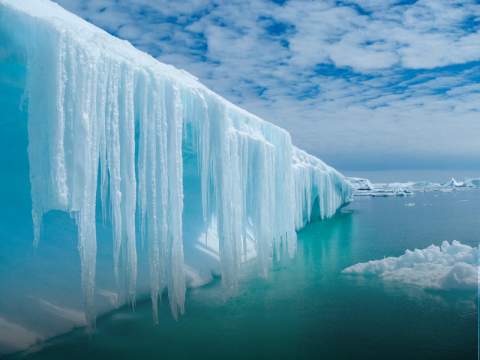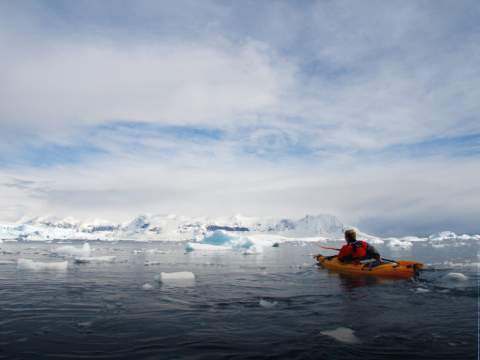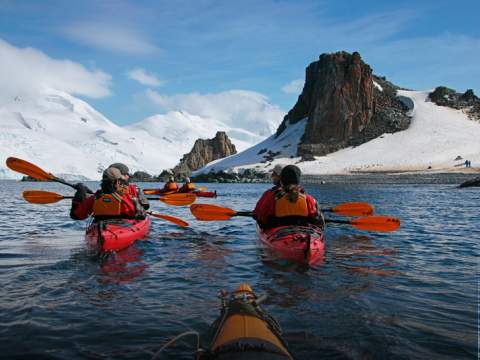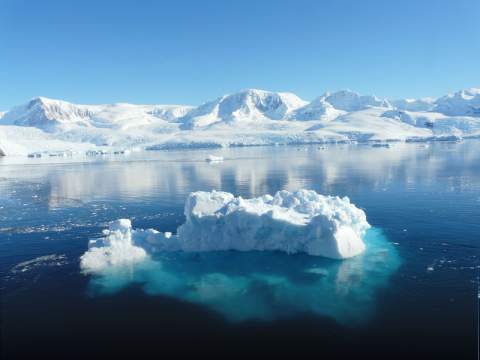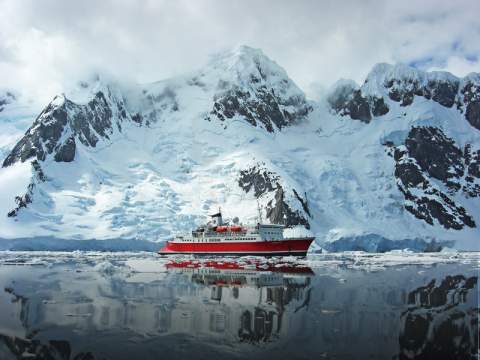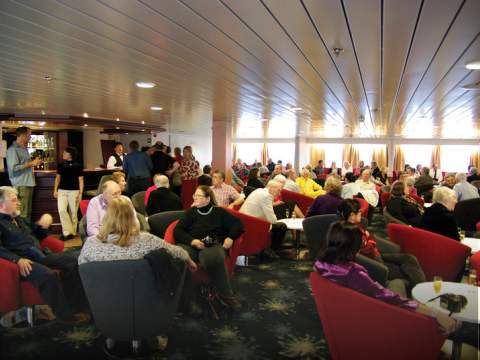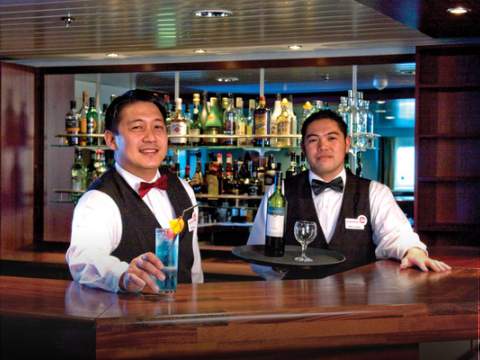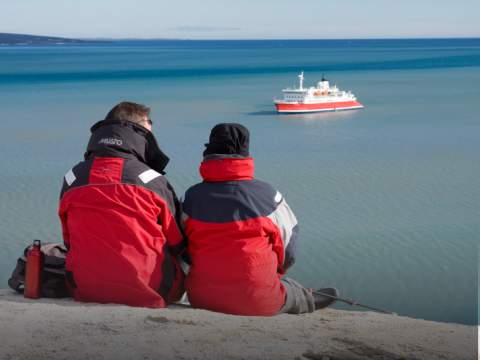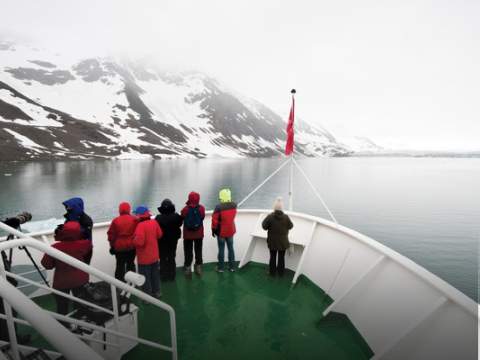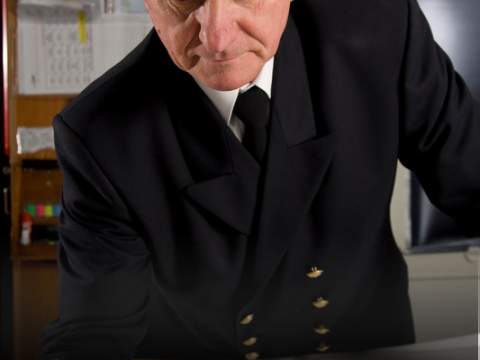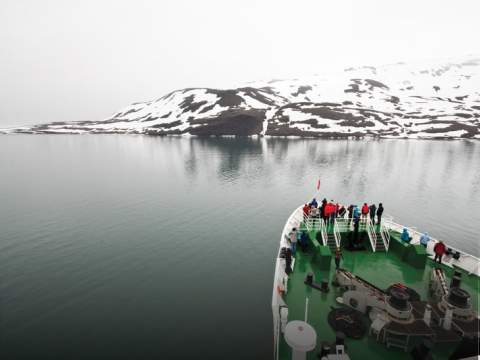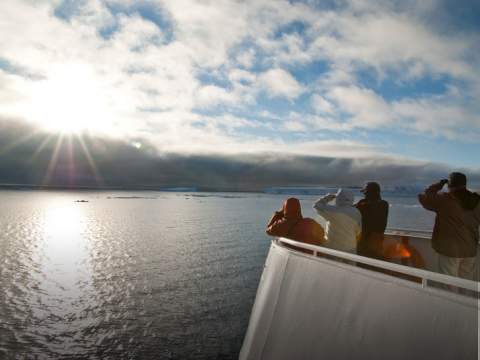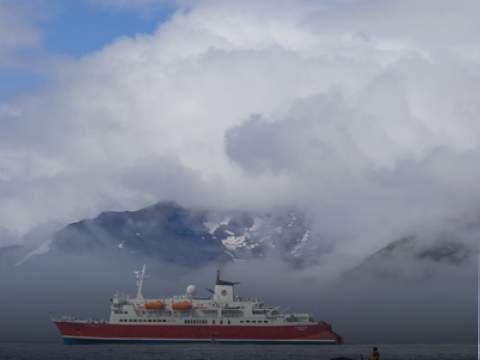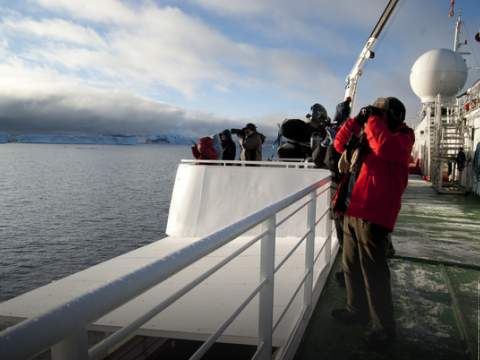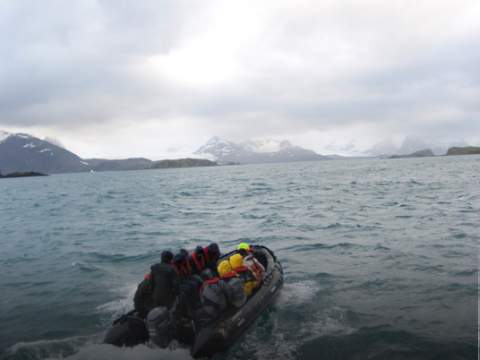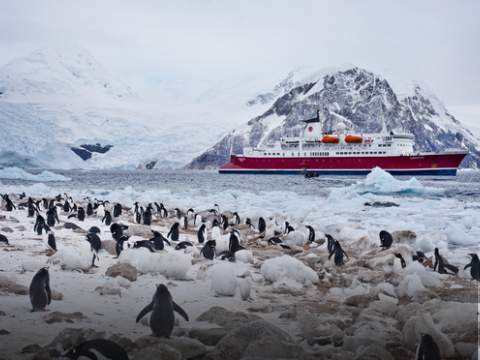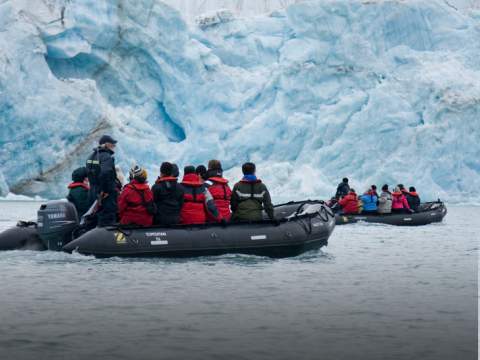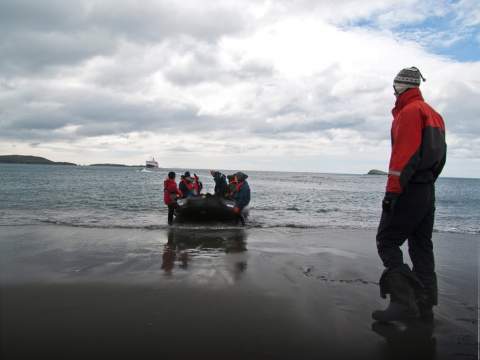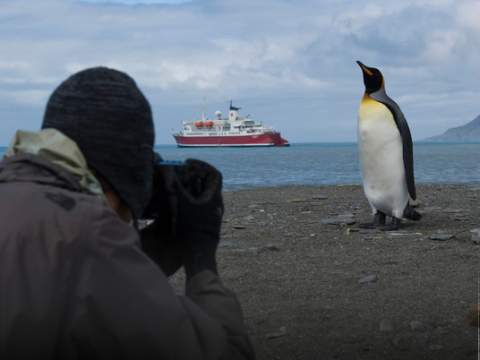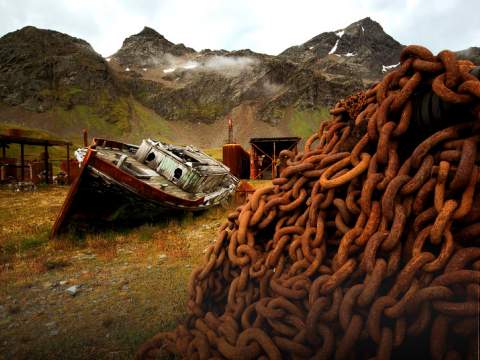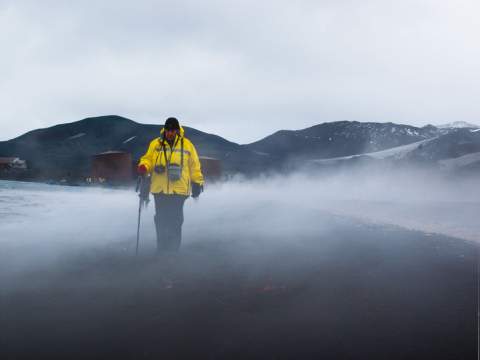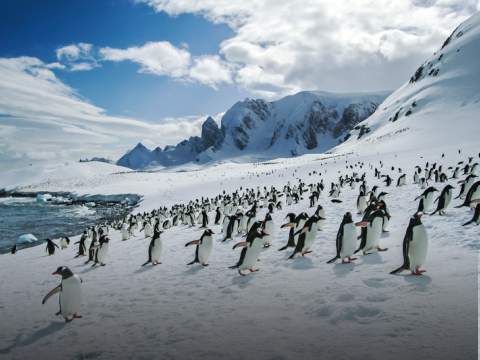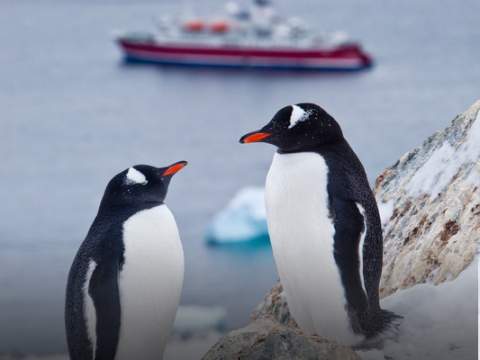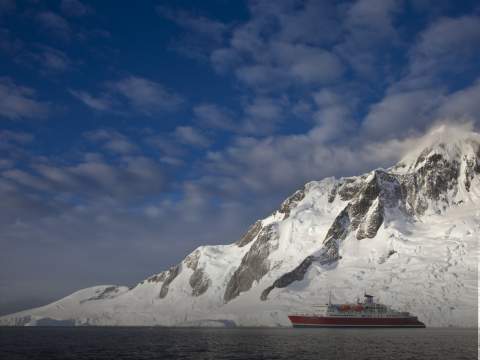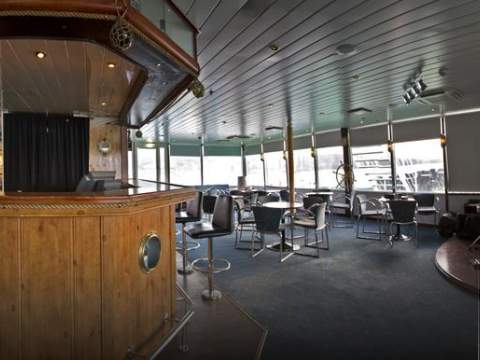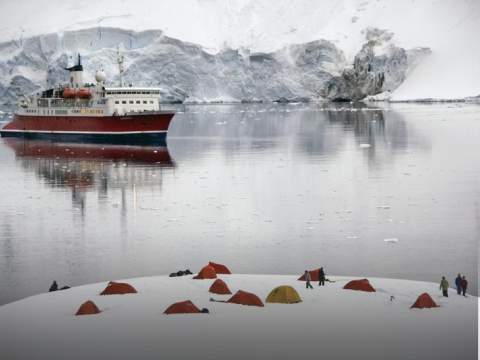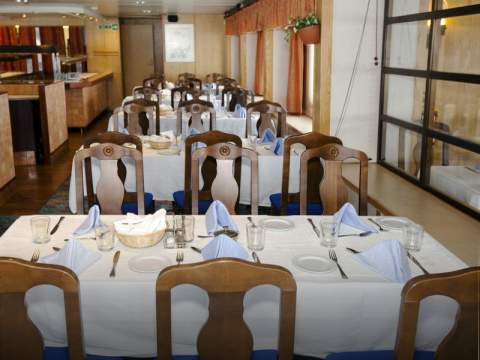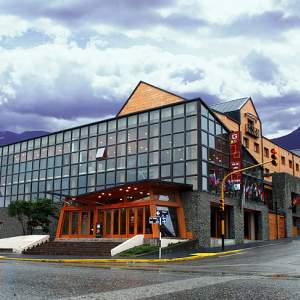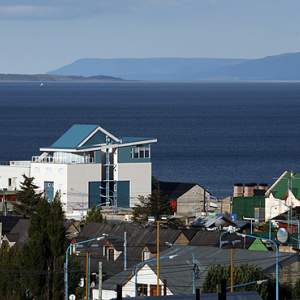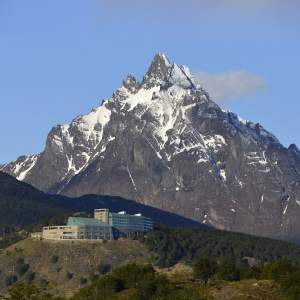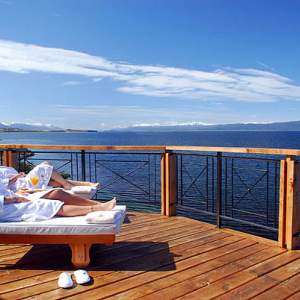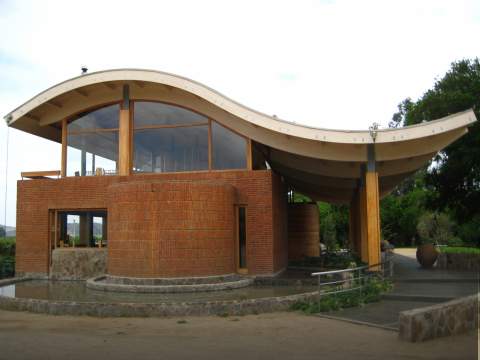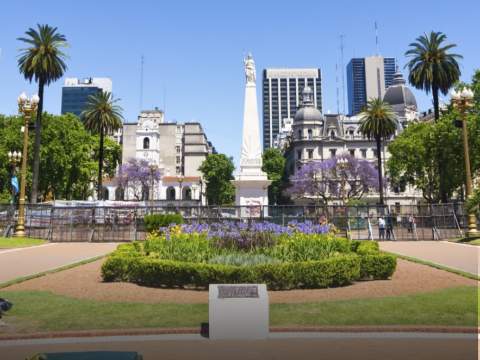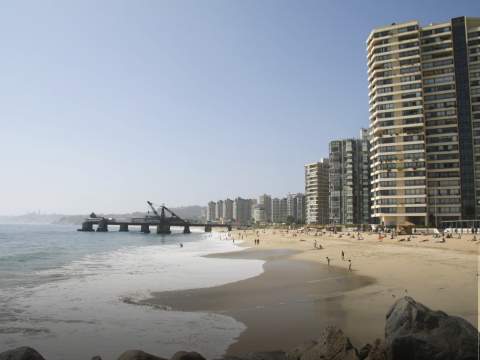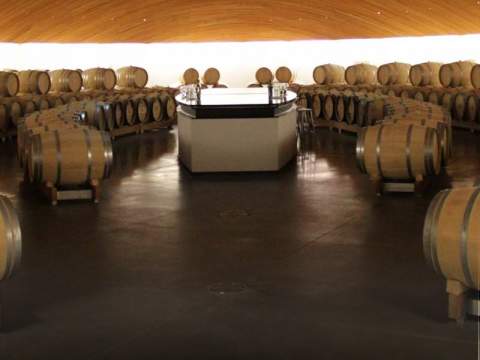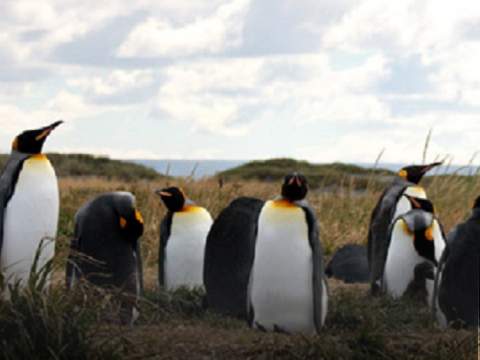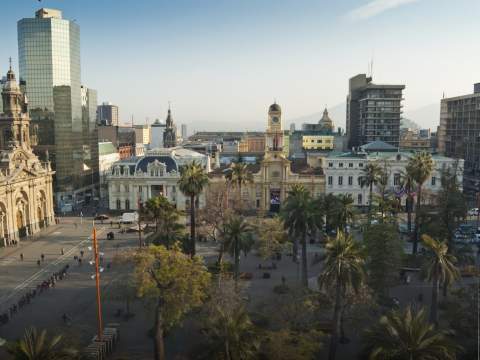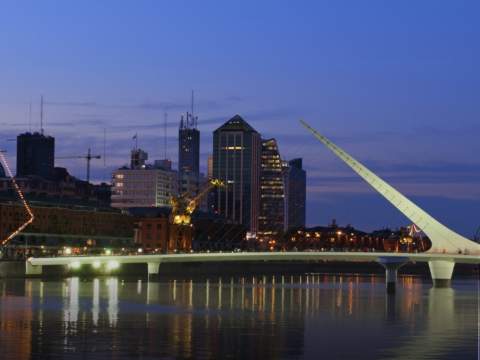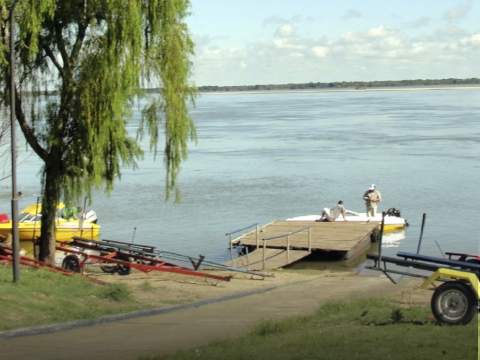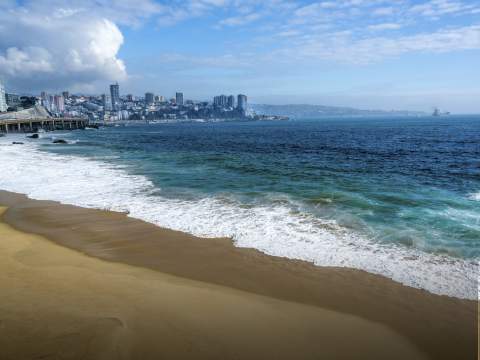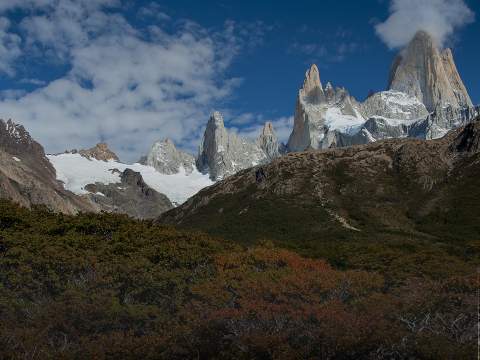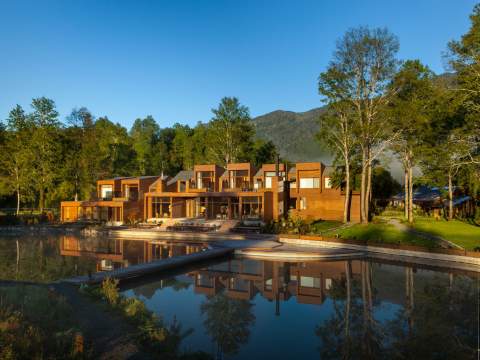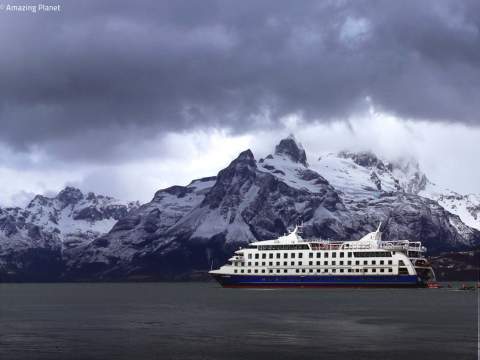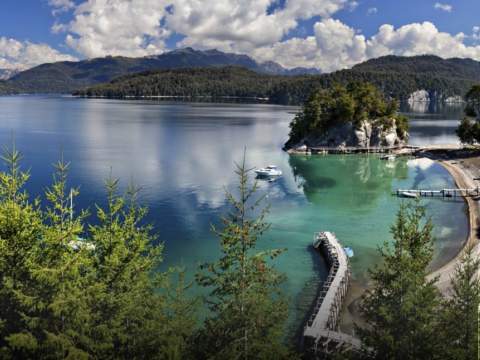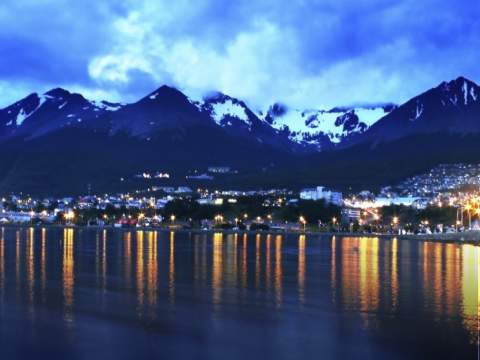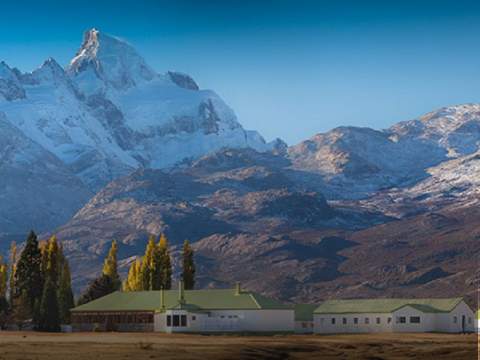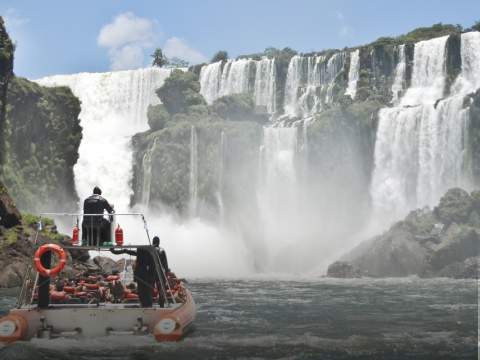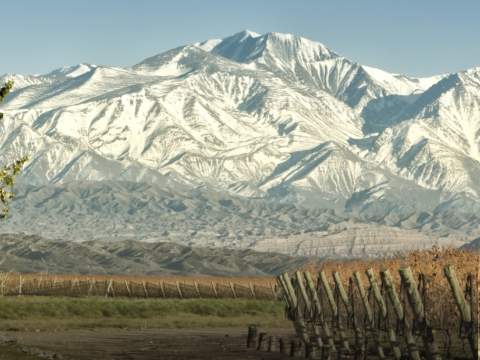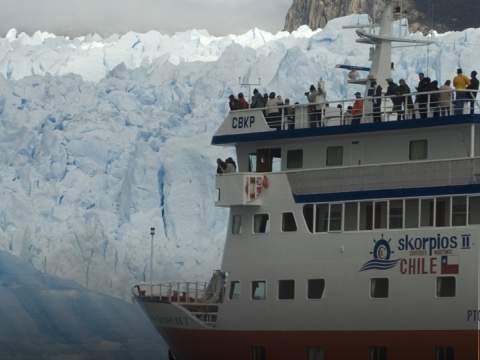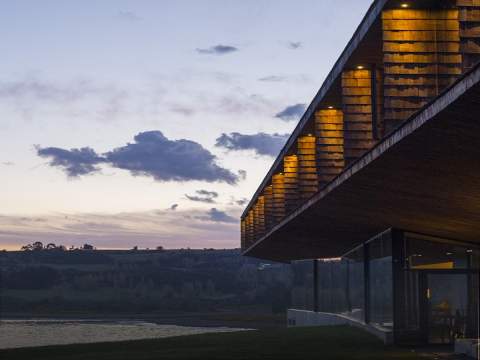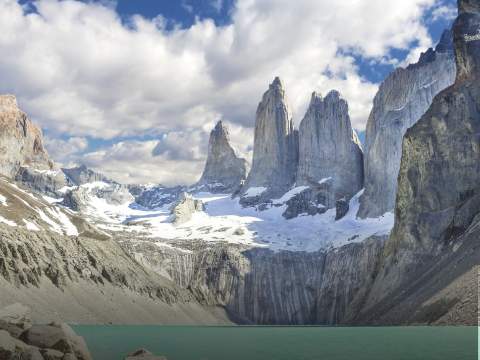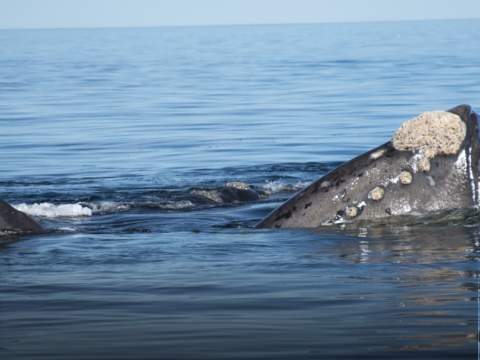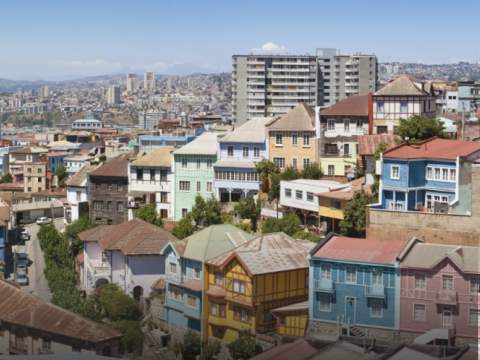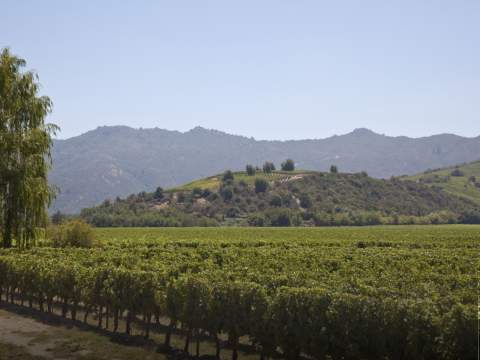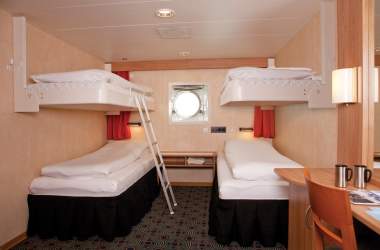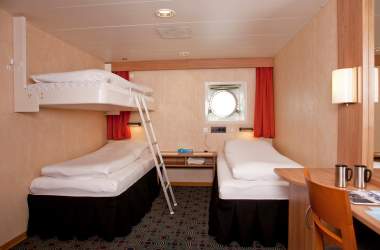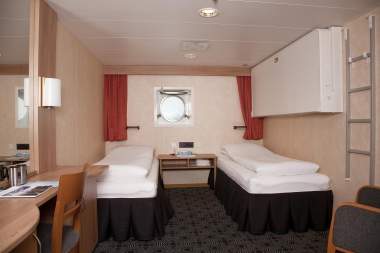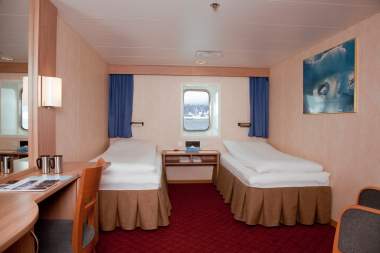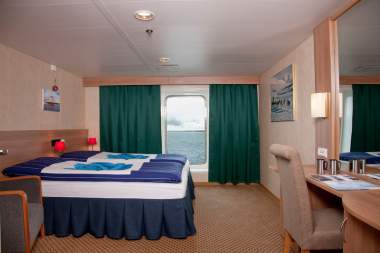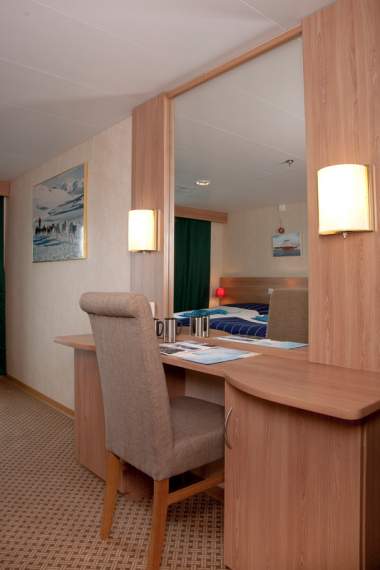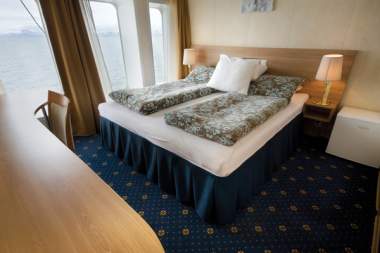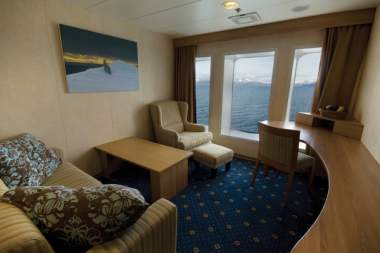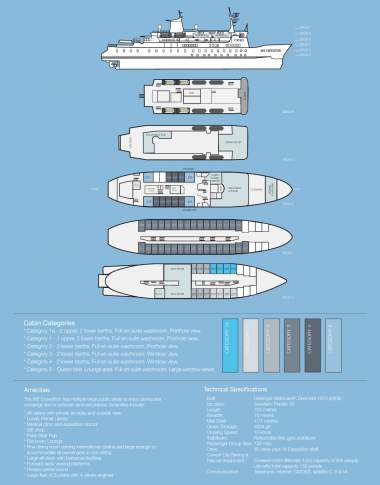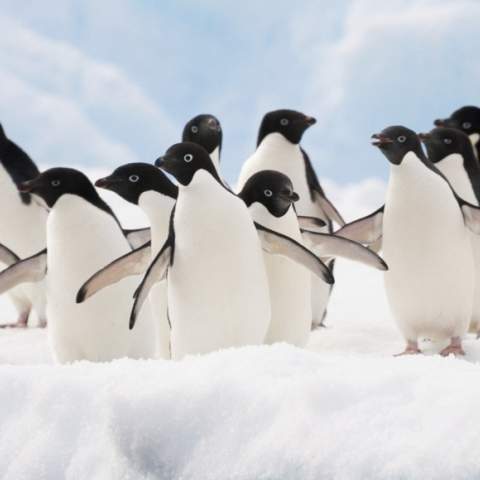Expedition
Itinerary (Antarctica in Depth)
Itinerary (Quest for the Antarctic Circle)
Itinerary (Falklands, South Georgia & Antarctica)
Itinerary (Falklands, South Georgia & Antarctica (Montevideo to Ushuaia))
Most Popular Antarctica Trips & Tours
| Trip | Price | Days | Highlights |
|---|---|---|---|
| Ocean Nova | $11,495 | 6 - 10 Days | Glaciers, Icebergs, Penguins, Whales, Kayaking, Hiking, Snowshoeing |
| Sea Spirit | $7,895 | 11 - 23 Days | Glaciers, Icebergs, Whales, Penguins, Hiking, Kayaking, Camping, Photography |
| Ushuaia | $5,460 | 10 - 20 Days | Glaciers, Icebergs, Whales, Penguins, Hiking |
- DAY 1: Arrive Ushuaia, Argentina
Welcome to Ushuaia, Tierra del Fuego, Argentina, the southernmost city in the world located in the shadow of the Andes! Sitting on the shores of the Beagle Channel, Ushuaia actually means 'the bay facing westward' in the language of the original Yamna inhabitants. Once a penal colony (the presidio was disbanded in the 1940s) for political prisoners as well as hardened criminals, Ushuaia is now a major tourist attraction, particularly for people cruising to Antarctica. The town of 40,000 is also a major ski resort area for both alpine and cross-country skiers and offers magnificent hiking in Parque Nacional Tierra del Fuego, the only coastal national park in Argentina. Upon arrival you will be transferred to your included Ushuaia hotel. Enjoy the rest of the day in Ushuaia at your leisure. Please contact us for your extension options in Ushuaia.
- DAY 2: Ushuaia - Embark
Enjoy a morning at leisure. You may opt for a cruise on the Beagle Channel, a trek in Tierra del Fuego National Park, or visit a nearby historical estancia and museum. In the late afternoon, head to the port of Ushuaia where you will embark your Antarctic expedition vessel. Once onboard, you’ll check into your cabin and enjoy a welcome briefing as you sail through this scenic waterway and watch the sunset over the Beagle Channel. (B,D)
- DAYS 3-4: Drake Passage
Your adventure begins with a 400 mile crossing of the passage that bears the name of the 16th century English explorer Sir Francis Drake. The Expedition is at home in this part of the Southern Ocean, known for the unimpeded never ending fetch of the winds that encircle Antarctica. Wandering, Black-browed and Light-mantled Sooty Albatross, Prion's and Cap Petrels are among some of the species of seabirds that may join you in your journey as you cross into Antarctica. At some point on the second day, you will cross the Antarctic Convergence, a meeting of cold polar water flowing north and warmer sub-Antarctic water moving in the opposite direction. It is the largest biological barrier on earth and is marked by a change in temperature, salinity and nutrient levels. When you pass this zone, you have entered the most nutrient rich waters on earth - the Southern Ocean. As you make the passage, you have time to become acquainted with the ship, frequent the common areas and take in daily lectures from the expedition team, while keeping an eye out for your first sightings of icebergs, whales, and albatross following in the ship’s wake. (B,L,D)
- DAYS 5-8: Antarctic Peninsula & South Shetland Islands
Antarctica is a continent of superlatives - it is the coldest, windiest, driest, iciest and highest of all the major landmasses in the world. It is the continent with the longest nights and the longest days. One of the last true wilderness, and the largest wilderness area left on earth – largely unchanged since the first sealers, whalers, and early explorers first landed on its inhospitable shores less than two centuries ago. The journey here is long, and the memories earned, eternal. So extreme and remote that it barely feels like it’s part of Earth at all. A true adventure to a world of immense scale and visual splendor. Painted in shades of white and blue, the landscape is as beautiful as it is forbidding: monstrous glaciers, saw-toothed mountains, colossal icebergs, and fields of ice that stretch on forever. But it’s that very otherworldliness that appeals to the adventurous souls who come here. And as barren as it looks, life – specifically penguins, whales, and seabirds – finds a way to thrive here. You will be awed by massive rookeries of penguins shuffling across a frozen shore, a pod of whales gliding through frigid waters; and dramatic landscapes that float off in the distance – welcome to Antarctica.
Over the next four days you will encounter some of the region's unique wildlife and awe-inspiring scenery and set foot on the Great White Continent! Two shore landings will regularly be attempted, per day (weather permitting), as your Captain navigates through the area. Your expedition team will make stops in the South Shetland Islands, then navigate through the Bransfield Strait and to the Antarctic Peninsula. The precise itinerary and daily schedule will be based on the local weather and ice conditions that the expedition encounters. The coastal areas you will visit have some of the greatest concentrations of wildlife on the continent. You will encounter Gentoo, Chinstrap, and Adélie penguin rookeries gathering with their fast-growing chicks; Weddell, Crabeater, and Leopard seals hauled out onto ices floes and beaches; Orca, Humpback, and Minke whales in the cold Antarctic waters, and numerous seabirds trailing in the ship’s wake. There is plenty of time to enjoy the sheer beauty and the breathtaking scenery of ice-choked waterways, blue and white icebergs, impressive glaciers and rugged snow-capped mountains. The peninsula also has a remarkable human history and during the voyage, you'll learn about some of the most important and dramatic expeditions to this remote corner of the world, take an optional polar plunge, visit an abandoned whaling station or a working scientific research station and gain a new perspective on this part of world. Keeping a lookout from the Bridge or the deck of the ship, as you thread your way along the continent, you'll feel the same sense of excitement as many of those early explorers. (B,L,D)
- DAYS 9-10: Drake Passage
Today you leave Antarctica and begin your return journey north across the Drake Passage. In between bird watching and whale watching and enjoying some final lectures by our expedition staff, this is a chance to relax and review the adventures of the past week before returning to Ushuaia. Remember, the best way to experience the wildlife of the Drake Passage is to be on deck keeping a look out for Albatross, Prions and Whales! (B,L,D)
- DAY 11: Disembark Ushuaia
You will arrive in the morning in Ushuaia and disembark the vessel after breakfast, where you will then be transferred to the airport for your flight to Buenos Aires. (B)
Key: (B)reakfast (L)unch (D)inner
- DAY 1: Arrive Ushuaia, Argentina
Welcome to Ushuaia, Tierra del Fuego, Argentina, the southernmost city in the world located in the shadow of the Andes! Sitting on the shores of the Beagle Channel, Ushuaia actually means 'the bay facing westward' in the language of the original Yamna inhabitants. Once a penal colony (the presidio was disbanded in the 1940s) for political prisoners as well as hardened criminals, Ushuaia is now a major tourist attraction, particularly for people cruising to Antarctica. The town of 40,000 is also a major ski resort area for both alpine and cross-country skiers and offers magnificent hiking in Parque Nacional Tierra del Fuego, the only coastal national park in Argentina. Upon arrival you will be transferred to your included Ushuaia hotel. Enjoy the rest of the day in Ushuaia at your leisure. Please contact us for your extension options in Ushuaia.
- DAY 2: Ushuaia - Embark
Enjoy a morning at leisure. You may opt for a cruise on the Beagle Channel, a trek in Tierra del Fuego National Park, or visit a nearby historical estancia and museum. In the late afternoon, head to the port of Ushuaia where you will embark your Antarctic expedition vessel. Once onboard, you’ll check into your cabin and enjoy a welcome briefing as you sail through this scenic waterway and watch the sunset over the Beagle Channel. (B,D)
- DAYS 3-4: Drake Passage
Your adventure begins with a 400 mile crossing of the passage that bears the name of the 16th century English explorer Sir Francis Drake. The Expedition is at home in this part of the Southern Ocean, known for the unimpeded never ending fetch of the winds that encircle Antarctica. Wandering, Black-browed and Light-mantled Sooty Albatross, Prion's and Cap Petrels are among some of the species of seabirds that may join you in your journey as you cross into Antarctica. At some point on the second day, you will cross the Antarctic Convergence, a meeting of cold polar water flowing north and warmer sub-Antarctic water moving in the opposite direction. It is the largest biological barrier on earth and is marked by a change in temperature, salinity and nutrient levels. When you pass this zone, you have entered the most nutrient rich waters on earth - the Southern Ocean. As you make the passage, you have time to become acquainted with the ship, frequent the common areas and take in daily lectures from the expedition team, while keeping an eye out for your first sightings of icebergs, whales, and albatross following in the ship’s wake. (B,L,D)
- DAYS 5-10: Antarctic Peninsula & South Shetland Islands
Antarctica is a continent of superlatives - it is the coldest, windiest, driest, iciest and highest of all the major landmasses in the world. It is the continent with the longest nights and the longest days. One of the last true wilderness, and the largest wilderness area left on earth – largely unchanged since the first sealers, whalers, and early explorers first landed on its inhospitable shores less than two centuries ago. The journey here is long, and the memories earned, eternal. So extreme and remote that it barely feels like it’s part of Earth at all. A true adventure to a world of immense scale and visual splendor. Painted in shades of white and blue, the landscape is as beautiful as it is forbidding: monstrous glaciers, saw-toothed mountains, colossal icebergs, and fields of ice that stretch on forever. But it’s that very otherworldliness that appeals to the adventurous souls who come here. And as barren as it looks, life – specifically penguins, whales, and seabirds – finds a way to thrive here. You will be awed by massive rookeries of penguins shuffling across a frozen shore, a pod of whales gliding through frigid waters; and dramatic landscapes that float off in the distance – welcome to Antarctica.
With a total of six full days to explore the world’s most southerly ecosystem, you'll have more time to encounter the region’s unique wildlife and awe-inspiring scenery and set foot on the Great White Continent! Two shore landings will regularly be attempted, per day (weather permitting), as your Captain navigates through the area. Your expedition team will make stops in the South Shetland Islands, then navigate through the Bransfield Strait and to the Antarctic Peninsula. The precise itinerary and daily schedule will be based on the local weather and ice conditions that the expedition encounters. The coastal areas you will visit have some of the greatest concentrations of wildlife on the continent. You will encounter Gentoo, Chinstrap, and Adélie penguin rookeries gathering with their fast-growing chicks; Weddell, Crabeater, and Leopard seals hauled out onto ices floes and beaches; Orca, Humpback, and Minke whales in the cold Antarctic waters, and numerous seabirds trailing in the ship’s wake. There is plenty of time to enjoy the sheer beauty and the breathtaking scenery of ice-choked waterways, blue and white icebergs, impressive glaciers and rugged snow-capped mountains. The peninsula also has a remarkable human history and during the voyage, you'll learn about some of the most important and dramatic expeditions to this remote corner of the world, take an optional polar plunge, visit an abandoned whaling station or a working scientific research station and gain a new perspective on this part of world. Keeping a lookout from the Bridge or the deck of the ship, as you thread your way along the continent, you'll feel the same sense of excitement as many of those early explorers. (B,L,D)
- DAYS 11-12: Drake Passage
Today you leave Antarctica and begin your return journey north across the Drake Passage. In between bird watching and whale watching and enjoying some final lectures by our expedition staff, this is a chance to relax and review the adventures of the past week before returning to Ushuaia. Remember, the best way to experience the wildlife of the Drake Passage is to be on deck keeping a look out for Albatross, Prions and Whales! (B,L,D)
- DAY 13: Disembark Ushuaia
You will arrive in the morning in Ushuaia and disembark the vessel after breakfast, where you will then be transferred to the airport for your flight to Buenos Aires. (B)
Key: (B)reakfast (L)unch (D)inner
- DAY 1: Arrive Ushuaia, Argentina
Welcome to Ushuaia, Tierra del Fuego, Argentina, the southernmost city in the world located in the shadow of the Andes! Sitting on the shores of the Beagle Channel, Ushuaia actually means 'the bay facing westward' in the language of the original Yamna inhabitants. Once a penal colony (the presidio was disbanded in the 1940s) for political prisoners as well as hardened criminals, Ushuaia is now a major tourist attraction, particularly for people cruising to Antarctica. The town of 40,000 is also a major ski resort area for both alpine and cross-country skiers and offers magnificent hiking in Parque Nacional Tierra del Fuego, the only coastal national park in Argentina. Upon arrival you will be transferred to your included Ushuaia hotel. Enjoy the rest of the day in Ushuaia at your leisure. Please contact us for your extension options in Ushuaia.
- DAY 2: Ushuaia - Embark
njoy a morning at leisure. You may opt for a cruise on the Beagle Channel, a trek in Tierra del Fuego National Park, or visit a nearby historical estancia and museum. In the late afternoon, head to the port of Ushuaia where you will embark your Antarctic expedition vessel. Once onboard, you’ll check into your cabin and enjoy a welcome briefing as you sail through this scenic waterway and watch the sunset over the Beagle Channel. (B,D)
- DAYS 3-4: Drake Passage
Your adventure begins with a 400 mile crossing of the passage that bears the name of the 16th century English explorer Sir Francis Drake. The Expedition is at home in this part of the Southern Ocean, known for the unimpeded never ending fetch of the winds that encircle Antarctica. Wandering, Black-browed and Light-mantled Sooty Albatross, Prion's and Cap Petrels are among some of the species of seabirds that may join you in your journey as you cross into Antarctica. At some point on the second day, you will cross the Antarctic Convergence, a meeting of cold polar water flowing north and warmer sub-Antarctic water moving in the opposite direction. It is the largest biological barrier on earth and is marked by a change in temperature, salinity and nutrient levels. When you pass this zone, you have entered the most nutrient rich waters on earth - the Southern Ocean. As you make the passage, you have time to become acquainted with the ship, frequent the common areas and take in daily lectures from the expedition team, while keeping an eye out for your first sightings of icebergs, whales, and albatross following in the ship’s wake. (B,L,D)
- DAYS 5-11: Antarctic Peninsula, Antarctic Circle & South Shetland Islands
Antarctica is a continent of superlatives - it is the coldest, windiest, driest, iciest and highest of all the major landmasses in the world. It is the continent with the longest nights and the longest days. One of the last true wilderness, and the largest wilderness area left on earth – largely unchanged since the first sealers, whalers, and early explorers first landed on its inhospitable shores less than two centuries ago. The journey here is long, and the memories earned, eternal. So extreme and remote that it barely feels like it’s part of Earth at all. A true adventure to a world of immense scale and visual splendor. Painted in shades of white and blue, the landscape is as beautiful as it is forbidding: monstrous glaciers, saw-toothed mountains, colossal icebergs, and fields of ice that stretch on forever. But it’s that very otherworldliness that appeals to the adventurous souls who come here. And as barren as it looks, life – specifically penguins, whales, and seabirds – finds a way to thrive here. You will be awed by massive rookeries of penguins shuffling across a frozen shore, a pod of whales gliding through frigid waters; and dramatic landscapes that float off in the distance – welcome to Antarctica.
Over the next seven days you will encounter some of the region's unique wildlife and awe-inspiring scenery and set foot on the Great White Continent! Two shore landings will regularly be attempted, per day (weather permitting), as your Captain navigates through the area. Southward bound, you expedition team will make stops in the South Shetland Islands, then navigate through the Bransfield Strait and to the Antarctic Peninsula, continuing south amidst the ice to cross within the Antarctic Circle. The precise itinerary and daily schedule will be based on the local weather and ice conditions that the expedition encounters. The coastal areas you will visit have some of the greatest concentrations of wildlife on the continent. You will encounter Gentoo, Chinstrap, and Adélie penguin rookeries gathering with their fast-growing chicks; Weddell, Crabeater, and Leopard seals hauled out onto ices floes and beaches; Orca, Humpback, and Minke whales in the cold Antarctic waters, and numerous seabirds trailing in the ship’s wake. There is plenty of time to enjoy the sheer beauty and the breathtaking scenery of ice-choked waterways, blue and white icebergs, impressive glaciers and rugged snow-capped mountains. The peninsula also has a remarkable human history and during the voyage, you'll learn about some of the most important and dramatic expeditions to this remote corner of the world. Keeping a lookout from the Bridge or the deck of the ship, as you thread your way along the continent, you'll feel the same sense of excitement as many of those early explorers.
With a close eye on weather conditions, your Captain will push southward along the western coast of the Antarctic Peninsula, passing colossal icebergs and countless colonies of penguins, with one goal in mind - crossing the Antarctic Polar Circle. Few travelers have ventured this far south, but with your fully equipped ice-strengthened vessel and favorable sea conditions, you can now count yourself one of them! After accomplishing your goal, your expedition will turn north for the first time to continue your exploration of the Antarctic Peninsula and South Shetland Islands. Keeping a close eye out for wildlife, you might have the opportunity to do some whale watching or even go for a polar plunge in the Southern waters. (B,L,D)
- DAYS 12-13: Drake Passage
oday you leave Antarctica and begin your return journey north across the Drake Passage. In between bird watching and whale watching and enjoying some final lectures by our expedition staff, this is a chance to relax and review the adventures of the past week before returning to Ushuaia. Remember, the best way to experience the wildlife of the Drake Passage is to be on deck keeping a look out for Albatross, Prions and Whales! (B,L,D)
- DAY 14: Disembark Ushuaia
You will arrive in the morning in Ushuaia and disembark the vessel after breakfast, where you will then be transferred to the airport for your flight to Buenos Aires. (B)
Key: (B)reakfast (L)unch (D)inner
- DAY 1: Arrive Ushuaia, Argentina
Welcome to Ushuaia, Tierra del Fuego, Argentina, the southernmost city in the world located in the shadow of the Andes! Sitting on the shores of the Beagle Channel, Ushuaia actually means 'the bay facing westward' in the language of the original Yamna inhabitants. Once a penal colony (the presidio was disbanded in the 1940s) for political prisoners as well as hardened criminals, Ushuaia is now a major tourist attraction, particularly for people cruising to Antarctica. The town of 40,000 is also a major ski resort area for both alpine and cross-country skiers and offers magnificent hiking in Parque Nacional Tierra del Fuego, the only coastal national park in Argentina. Upon arrival you will be transferred to your included Ushuaia hotel. Enjoy the rest of the day in Ushuaia at your leisure
- DAY 2: Ushuaia - Embark
Enjoy a morning at leisure. You may opt for a cruise on the Beagle Channel, a trek in Tierra del Fuego National Park, or visit a nearby historical estancia and museum. In the late afternoon, head to the port of Ushuaia where you will embark your Antarctic expedition vessel. Once onboard, you’ll check into your cabin and enjoy a welcome briefing as you sail through this scenic waterway and watch the sunset over the Beagle Channel. (B,D)
- DAY 3: At Sea
As you make the passage east, bound for the Falkland Islands, you have time to become acquainted with the ship, frequent the common areas where you’ll meet the guides, ship’s crew and lecturers and attend the information sessions about the extraordinary human and natural history of the Antarctic region. (B,L,D)
- DAYS 4-5: Falkland Islands
The Falkland Islands provide a rare opportunity to witness the biological diversity and extraordinary scenery of the southern islands. The hope here will be to catch the first glimpses of penguins, including the Magellanic, Rockhopper, Gentoo, and King penguins. With a little luck, you may also see the Elephant seals, sea lions, King cormorants, Black-browed albatross, skuas, Night herons, Giant petrels, Striated caracaras and, of course, sheep. Port Stanley provides an opportunity to meet the hardy local inhabitants whose colorful houses provide contrast to the long dark winters. (B,L,D)
- DAYS 6-7: At Sea
Sailing east, you'll set course for South Georgia. Days at sea are filled with lectures to prepare you for landings on South Georgia, and you will have plenty of time on deck to identify the abundant sea birds of the south ocean and keep your eyes peeled for the many whales that inhabit these waters. Along the way, you will cross the Antarctic Convergence, a meeting of cold polar water flowing north and warmer sub-Antarctic water moving in the opposite direction. It is the largest biological barrier on earth and is marked by a change in temperature, salinity and nutrient levels. The north flowing Antarctic waters predominantly sink beneath southward moving sub-Antarctic waters. When you pass this zone, you have entered the most nutrient rich waters on the earth-the Southern Ocean. (B,L,D)
- DAYS 8-11: South Georgia
South Georgia Island is home to many marvels including the grave of polar explorer Ernest Shackleton’s, former whaling stations, incredible scenery and prolific wildlife. Today the island’s wildlife is extraordinary, not only in its variety, but also for its sheer abundance. South Georgia is home to roughly 300,000 Elephant seals, 3 million Fur seals, and 25 species of breeding birds, including the Wandering albatross. The gravel beach at St. Andrews Bay has a King penguin rookery of 100,000 and visiting this huge colony is a major highlight of this part of the journey. During the four days you’ll spend here, you will visit historical sites, walk quietly amongst king penguins and watch them surf onto the beach, learn about the environment and ecology from industry experts. (B,L,D)
- DAYS 12-13: At Sea
Plotting a southwesterly course, you will retrace Shackleton's route backwards as you cross the Scotia Sea and head towards legendary Elephant Island in the South Shetland Islands and the Antarctic Peninsula. The Expedition is at home in this part of the Southern Ocean, known for the unimpeded never ending fetch of the winds that encircle Antarctica. As you make the passage, you will enjoy more daily lectures from the expedition team, while keeping an eye out for your first sightings of icebergs, whales, and albatross following in the ship’s wake. Wandering, Black-browed and Light-mantled Sooty Albatross, Prion's and Cap Petrels are among some of the species of seabirds that may join you in your journey as you cross into Antarctica. (B,L,D)
- DAYS 14-18: Antarctic Peninsula and South Shetland Islands
Antarctica is a continent of superlatives - it is the coldest, windiest, driest, iciest and highest of all the major landmasses in the world. It is the continent with the longest nights and the longest days. One of the last true wilderness, and the largest wilderness area left on earth – largely unchanged since the first sealers, whalers, and early explorers first landed on its inhospitable shores less than two centuries ago. The journey here is long, and the memories earned, eternal. So extreme and remote that it barely feels like it’s part of Earth at all. A true adventure to a world of immense scale and visual splendor. Painted in shades of white and blue, the landscape is as beautiful as it is forbidding: monstrous glaciers, saw-toothed mountains, colossal icebergs, and fields of ice that stretch on forever. But it’s that very otherworldliness that appeals to the adventurous souls who come here. And as barren as it looks, life – specifically penguins, whales, and seabirds – finds a way to thrive here. You will be awed by massive rookeries of penguins shuffling across a frozen shore, a pod of whales gliding through frigid waters; and dramatic landscapes that float off in the distance. Antarctica is beyond comprehension and sure to amaze any traveler seeking a true adventure to the world’s most remote wilderness.
With a total of five days to explore the world’s most southerly ecosystem, you'll have time to encounter the region’s unique wildlife and awe-inspiring scenery and set foot on the Great White Continent! Two shore landings will regularly be attempted, per day (weather permitting), as your Captain navigates through the area. Your expedition team will make stops in the South Shetland Islands, then navigate through the Bransfield Strait and to the Antarctic Peninsula. The precise itinerary and daily schedule will be based on the local weather and ice conditions that the expedition encounters. The coastal areas you will visit have some of the greatest concentrations of wildlife on the continent. You will encounter Gentoo, Chinstrap, and Adélie penguin rookeries gathering with their fast-growing chicks; Weddell, Crabeater, and Leopard seals hauled out onto ices floes and beaches; Orca, Humpback, and Minke whales in the cold Antarctic waters, and numerous seabirds trailing in the ship’s wake. There is plenty of time to enjoy the sheer beauty and the breathtaking scenery of ice-choked waterways, blue and white icebergs, impressive glaciers and rugged snow-capped mountains. The peninsula also has a remarkable human history and during the voyage, you'll learn about some of the most important and dramatic expeditions to this remote corner of the world, take an optional polar plunge, visit an abandoned whaling station or a working scientific research station and gain a new perspective on this part of world. Keeping a lookout from the Bridge or the deck of the ship, as you thread your way along the continent, you'll feel the same sense of excitement as many of those early explorers. (B,L,D)
- DAYS 19-20: Drake Passage
Today you leave Antarctica and begin your return journey north across the Drake Passage. In between bird watching and whale watching and enjoying some final lectures by our expedition staff, this is a chance to relax and review the adventures of the past week before returning to Ushuaia. Remember, the best way to experience the wildlife of the Drake Passage is to be on deck keeping a look out for Albatross, Prions and Whales! (B,L,D)
- DAY 21: Disembark Ushuaia
You will arrive in the morning in Ushuaia and disembark the vessel after breakfast, where you will then be transferred to the airport for your flight to Buenos Aires. (B)
Key: (B)reakfast (L)unch (D)inner
- DAY 1: Arrive Montevideo, Uruguay
Welcome to Montevideo, the capital of Uruguay and an UNESCO World Heritage Site. A pleasant seaside resort of colonial charm on the banks of the River Plate, with long beaches, sea lion colonies, vineyards, ranches and bars, a frenetic carnival - Montevideo never ceases to amaze. Founded by the Spanish in 1726, it is the youngest of the South American capitals and boasts a charming historic district with Spanish, Italian and Art Deco influences. In the picturesque streets of Ciudadela, you can discover the ruins of the city walls. Upon arrival you will be transferred to your included Montevideo hotel. Enjoy the rest of the day in Montevideo at your leisure. In the early evening you will meet your fellow expeditioners for a group meeting to discuss the plans for tomorrow. Please contact us for your extension options in Montevideo.
- DAY 2: Montevideo - Embark
Enjoy a morning at leisure. The morning is free for you to do any last minute shopping or visit one of Montevideo’s colorful neighborhoods. In the late afternoon, the group will transfer to the port for embarkation. Once onboard, you’ll check into your cabin and enjoy a welcome briefing as you begin sailing southwards towards the Falkland Islands. (B,D)
- DAYS 3-5: At Sea
As you make the passage south, bound for the Falkland Islands, you have time to become acquainted with the ship, frequent the common areas where you’ll meet the guides, ship’s crew and lecturers and attend the information sessions about the extraordinary human and natural history of the Antarctic region. (B,L,D)
- DAYS 6-7: Falkland Islands
The Falkland Islands provide a rare opportunity to witness the biological diversity and extraordinary scenery of the southern islands. The hope here will be to catch the first glimpses of penguins, including the Magellanic, Rockhopper, Gentoo, and King penguins. With a little luck, you may also see the Elephant seals, sea lions, King cormorants, Black-browed albatross, skuas, Night herons, Giant petrels, Striated caracaras and, of course, sheep. Port Stanley provides an opportunity to meet the hardy local inhabitants whose colorful houses provide contrast to the long dark winters. (B,L,D)
- DAYS 8-9: At Sea
Sailing east, you'll set course for South Georgia. Days at sea are filled with lectures to prepare you for landings on South Georgia, and you will have plenty of time on deck to identify the abundant sea birds of the south ocean and keep your eyes peeled for the many whales that inhabit these waters. Along the way, you will cross the Antarctic Convergence, a meeting of cold polar water flowing north and warmer sub-Antarctic water moving in the opposite direction. It is the largest biological barrier on earth and is marked by a change in temperature, salinity and nutrient levels. The north flowing Antarctic waters predominantly sink beneath southward moving sub-Antarctic waters. When you pass this zone, you have entered the most nutrient rich waters on the earth-the Southern Ocean. (B,L,D)
- DAY 10-13: South Georgia
South Georgia Island is home to many marvels including the grave of polar explorer Ernest Shackleton’s, former whaling stations, incredible scenery and prolific wildlife. Today the island’s wildlife is extraordinary, not only in its variety, but also for its sheer abundance. South Georgia is home to roughly 300,000 Elephant seals, 3 million Fur seals, and 25 species of breeding birds, including the Wandering albatross. The gravel beach at St. Andrews Bay has a King penguin rookery of 100,000 and visiting this huge colony is a major highlight of this part of the journey. During the four days you’ll spend here, you will visit historical sites, walk quietly amongst king penguins and watch them surf onto the beach, learn about the environment and ecology from industry experts. (B,L,D)
- DAY 14-15: Scotia Sea
- Plotting a southwesterly course, you will retrace Shackleton's route backwards as you cross the Scotia Sea and head towards legendary Elephant Island in the South Shetland Islands and the Antarctic Peninsula. The Expedition is at home in this part of the Southern Ocean, known for the unimpeded never ending fetch of the winds that encircle Antarctica. As you make the passage, you will enjoy more daily lectures from the expedition team, while keeping an eye out for your first sightings of icebergs, whales, and albatross following in the ship’s wake. Wandering, Black-browed and Light-mantled Sooty Albatross, Prion's and Cap Petrels are among some of the species of seabirds that may join you in your journey as you cross into Antarctica. (B,L,D)
- DAY 16-19: South Shetland Islands & Antarctic Peninsula
- Antarctica is a continent of superlatives - it is the coldest, windiest, driest, iciest and highest of all the major landmasses in the world. It is the continent with the longest nights and the longest days. One of the last true wilderness, and the largest wilderness area left on earth – largely unchanged since the first sealers, whalers, and early explorers first landed on its inhospitable shores less than two centuries ago. The journey here is long, and the memories earned, eternal. So extreme and remote that it barely feels like it’s part of Earth at all. A true adventure to a world of immense scale and visual splendor. Painted in shades of white and blue, the landscape is as beautiful as it is forbidding: monstrous glaciers, saw-toothed mountains, colossal icebergs, and fields of ice that stretch on forever. But it’s that very otherworldliness that appeals to the adventurous souls who come here. And as barren as it looks, life – specifically penguins, whales, and seabirds – finds a way to thrive here. You will be awed by massive rookeries of penguins shuffling across a frozen shore, a pod of whales gliding through frigid waters; and dramatic landscapes that float off in the distance. Antarctica is beyond comprehension and sure to amaze any traveler seeking a true adventure to the world’s most remote wilderness.
With a total of four days to explore the world’s most southerly ecosystem, you'll have time to encounter the region’s unique wildlife and awe-inspiring scenery as you explore the South Shetland Islands, just north of the Antarctic Peninsula. Two shore landings will regularly be attempted, per day (weather permitting), as your Captain navigates through the area. At this time of year the sea ice is just breaking up and prevents wildlife like penguins and humans alike from entering many of the nooks and crannies of the islands and peninsula, so the precise itinerary and daily schedule will be based on the local weather and ice conditions that the expedition encounters. Wind and storm systems will determine if the expedition can approach to the continent itself. There is plenty of time to enjoy the sheer beauty and the breathtaking scenery of ice-choked waterways, blue and white icebergs, impressive glaciers and rugged snow-capped mountains. The sea ice is a destination all in itself, as it surrounds the continent in winter expanding the size of Antarctica nearly twice of what the land mass covers. The peninsula also has a remarkable human history and during the voyage, you'll learn about some of the most important and dramatic expeditions to this remote corner of the world. Keeping a lookout from the Bridge or the deck of the ship, as you thread your way along the ice edge, you'll feel the same sense of excitement as many of those early explorers.
The South Shetland islands, and further south the Antarctic Peninsula, contrast between stark austere ice covered landscape and rich wildlife activity. You will keep a lookout for whales as you cruise the Bransfield Strait. It is early for large numbers of them to be present but there are always a few that spend their winters in Antarctica. The coastal areas you will visit have some of the greatest concentrations of wildlife on the continent. This time of year is the perfect time to keep a look out for Weddell seal females pupping and nursing. You may even see a male quietly swimming the coast line waiting for an opportunity to breed. All the ice seals give birth on the ice, Crabeaters and Leopards are two for you to keep a look out for! You will witness Adélie, Gentoo and Chinstrap penguins struggling across the frozen sea and climbing snow and ice covered landscape to return to the exact same nesting sites they have used over and over again. If the snow is too high, they simple hunker down and wait for the summer warming to melt away the winters piles. In the early season, Antarctic petrels are also sometimes seen with their near cousin the Cape petrel. (B,L,D)
- DAY 20-21: Drake Passage
- Today you leave Antarctica and begin your return journey north across the Drake Passage. In between bird watching and whale watching and enjoying some final lectures by our expedition staff, this is a chance to relax and review the adventures of the past week before returning to Ushuaia. Remember, the best way to experience the wildlife of the Drake Passage is to be on deck keeping a look out for Albatross, Prions and Whales! (B,L,D)
- DAY 22: Ushuaia, Disembark
- You will arrive in the morning in Ushuaia and disembark the vessel after breakfast, where you will then be transferred to the airport for your flight to Buenos Aires. (B)
Key: (B)reakfast (L)unch (D)inner
Weather
When to Visit- jan
- feb
- mar
- apr
- may
- jun
- jul
- aug
- sep
- oct
- nov
- dec
You may also wish to schedule your trip according to what wildlife activities you are likely to observe at different points during the season, details below:
o Late October and November: The early part of the season showcases a number of highlights. Landing sites are at their most pristine. The possibility of seeing sea ice is present early on, before it breaks up later on in the season. Late October to early November sees Adélie, Chinstrap and Gentoo adult penguins and Antarctic-breeding seabirds starting to come ashore to their breeding sites where they commence courtship rituals and nest building. Shortly thereafter eggs are laid and incubated. Emperor penguins can be seen on the frozen Weddell Sea (visited occasionally by ice-strengthened expedition ships on special itineraries).
Spring flowers begin blooming in the Falkland Islands (Islas Malvinas) and elephant seals are actively courting in South Georgia. South Georgia's female king penguins lay their eggs in November and the parents can be seen "carrying" eggs on their feet so that the parent can shuffle around the colony while the other adult goes out to sea to feed. "Oakum Boys" — king penguin chicks from the previous season — can also be seen in the rookeries. Fur seals litter the beaches in South Georgia with the males aggressive and ready to mate.
o December and January: The increased number of daylight hours brings exceptional opportunities for photographers and non-photographers alike, and the expeditions make the most of the summer weather and continuous hours of daylight. Research activity in the Peninsula at the scientific bases is at its peak. Penguin chicks begin hatching in the Falklands (Islas Malvinas); followed by hatchings in mid- to late-December at sites in the Antarctic Peninsula. Some 30 days after hatching, penguin chicks can be found in "crèches," resembling a nursery of sorts, which leaves both adults free to replenish their food supply. An exciting time of this part of the season is when the parent returns with food and the hungry chicks are persistent in being fed, running after the parent (or any adult penguin with food) in a "feeding chase." Whale sightings of baleen and toothed whales escalate in the Peninsula area. Seal pups can be seen on the beaches in South Georgia. Sea ice is also beginning to break up which allows for the possibility to begin to access to rarely visited sites in the Weddell Sea, Ross Sea and within the Antarctic Circle.
o February and March: Sightings of whales are at their peak in the Peninsula and an increasing number of fur seals can be found along the Peninsula and offshore islands. Young fur seals are also quite playful in South Georgia. Penguin colonies are very active with the penguin chicks beginning their molt - losing their fuzzy down and developing their adult plumage. During this timeframe, the parents will abandoned their chicks, and return out to sea to feed and fatten up for their own molting stage. Most colonies (Adélie, Chinstrap and Gentoo) are nearly vacated by the end of February to early March. Blooming snow algae is prevalent and receding pack ice has reached its peak for the season, allowing for easier exploration within the Weddell Sea, Ross Sea and Antarctic Circle.
Maps
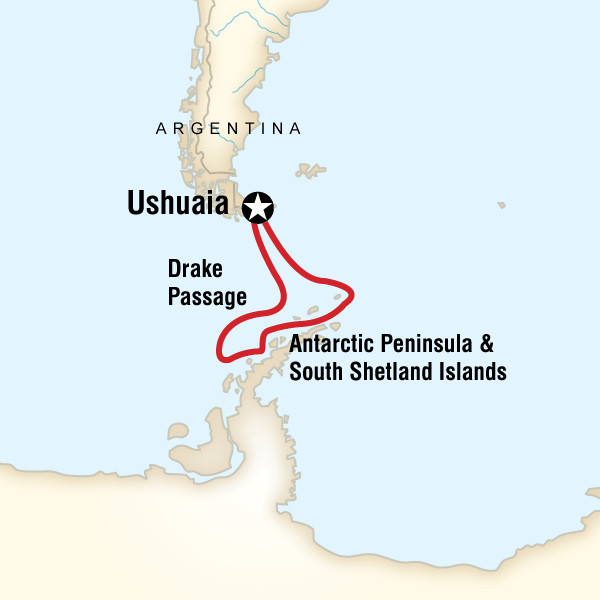
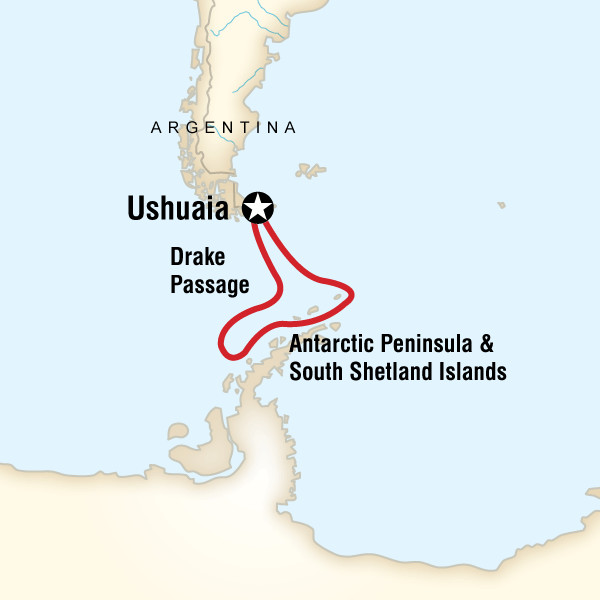
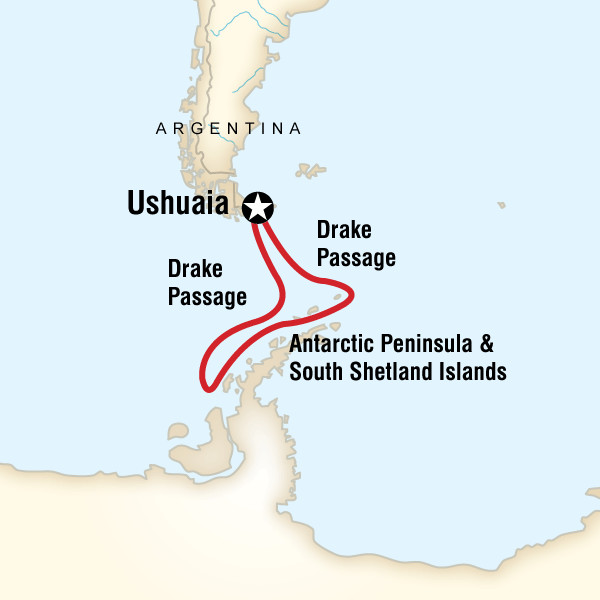
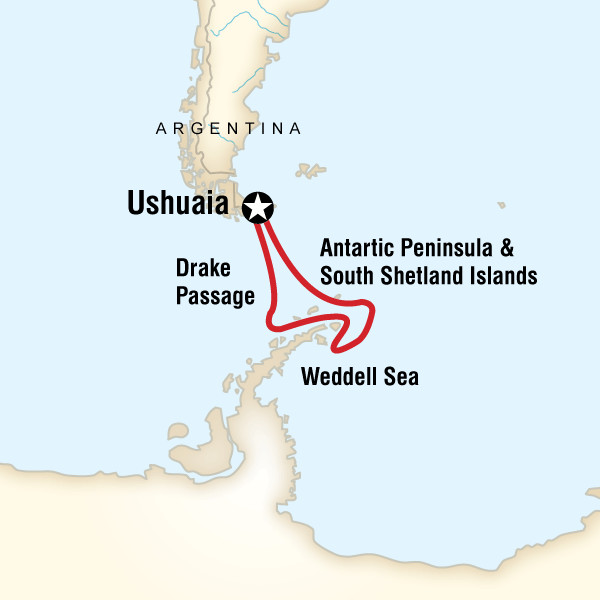
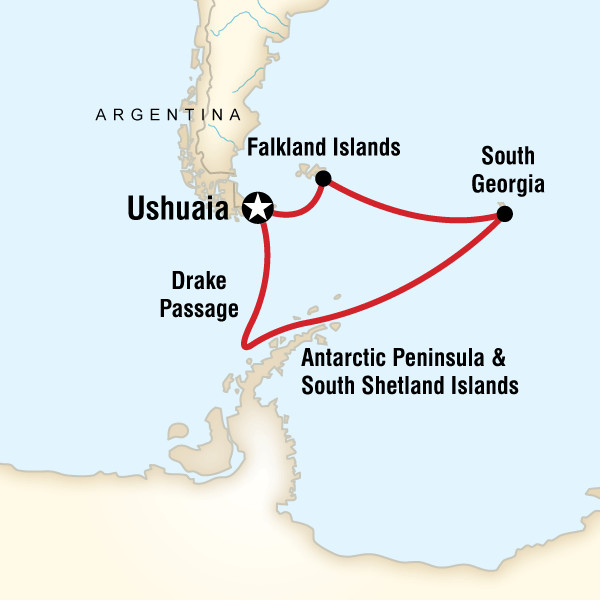
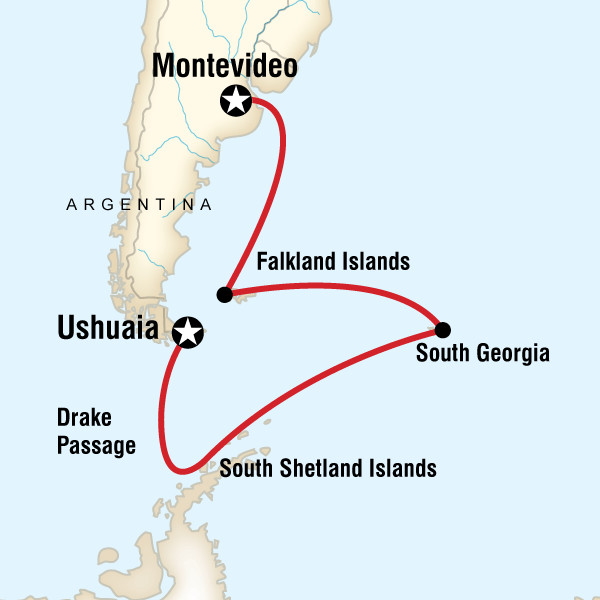
Antarctica Classic
- Pricing
- Price Range Per Person (Category 1A to Category 5):
11 Day Expedition $6,899 - $14,599 per person
-Pre-trip hotel night included.
-Please inquire for single supplement pricing. A solo traveler willing to share a cabin with another passenger (or passengers) of the same gender can avoid the single supplement.
-Contact us for details on optional activities available on your particular departure. - Included in tour cost
- Antarctica cruise accommodations
- All meals onboard Antarctica cruise
- Airport transfers in Ushuaia - Included for some departures
- 1 night's accommodations Ushuaia - Included for some departures
- All shore excursions throughout voyage by zodiac
- Photography Program
- Camping, Kayaking, Snowshoeing/Hiking, Mountaineering, and Photo Workshops included on some departures
- Expedition parka
- Rubber boots available onboard – must be pre-reserved
- English-speaking certified guides
- Entrance fees for all scheduled tours, national parks & archaeological sites
- Southern Explorations pre-departure services
- Excluded from tour cost
- International airfare to/from Argentina and/or Chile
- Buenos Aires services (hotel & airport transfers)
- Meals in Argentina and/or Chile - unless otherwise noted
- Medical evacuation insurance (mandatory)
- Trip cancellation/interruption insurance (recommended)
- Camping available at additional cost - includes all gear
- Kayaking available at additional cost - includes all gear
Antarctica in Depth
- Pricing
- Price Range Per Person (Category 1A to Category 5):
13 Day Expedition $7,399 - $14,499 per person
-Pre-trip hotel night included.
-Please inquire for single supplement pricing. A solo traveler willing to share a cabin with another passenger (or passengers) of the same gender can avoid the single supplement.
-Contact us for details on optional activities available on your particular departure. - Included in tour cost
- Antarctica cruise accommodations
- All meals onboard Antarctica cruise
- Airport transfers in Ushuaia - Included for some departures
- 1 night's accommodations Ushuaia - Included for some departures
- All shore excursions throughout voyage by zodiac
- Photography Program
- Camping, Kayaking, Snowshoeing/Hiking, Mountaineering, and Photo Workshops included on some departures
- Expedition parka
- Rubber boots available onboard – must be pre-reserved
- English-speaking certified guides
- Entrance fees for all scheduled tours, national parks & archaeological sites
- Southern Explorations pre-departure services
- Excluded from tour cost
- International airfare to/from Argentina and/or Chile
- Buenos Aires services (hotel & airport transfers)
- Meals in Argentina and/or Chile - unless otherwise noted
- Medical evacuation insurance (mandatory)
- Trip cancellation/interruption insurance (recommended)
- Camping available at additional cost - includes all gear
- Kayaking available at additional cost - includes all gear
Quest for the Antarctic Circle
- Pricing
- Price Range Per Person (Category 1A to Category 5):
14 Day Expedition $9,799 - $17,899 per person
-Pre-trip hotel night included.
-Please inquire for single supplement pricing. A solo traveler willing to share a cabin with another passenger (or passengers) of the same gender can avoid the single supplement.
-Contact us for details on optional activities available on your particular departure. - Included in tour cost
- Antarctica cruise accommodations
- All meals onboard Antarctica cruise
- Airport transfers in Ushuaia - Included for some departures
- 1 night's accommodations Ushuaia - Included for some departures
- All shore excursions throughout voyage by zodiac
- Photography Program
- Camping, Kayaking, Snowshoeing/Hiking, Mountaineering, and Photo Workshops included on some departures
- Expedition parka
- Rubber boots available onboard – must be pre-reserved
- English-speaking certified guides
- Entrance fees for all scheduled tours, national parks & archaeological sites
- Southern Explorations pre-departure services
- Excluded from tour cost
- International airfare to/from Argentina and/or Chile
- Buenos Aires services (hotel & airport transfers)
- Meals in Argentina and/or Chile - unless otherwise noted
- Medical evacuation insurance (mandatory)
- Trip cancellation/interruption insurance (recommended)
- Camping available at additional cost - includes all gear
- Kayaking available at additional cost - includes all gear
Falklands, South Georgia & Antarctica
- Pricing
- Price Range Per Person (Category 1A to Category 5):
22 Day Expedition $11,669 - $19,699 per person
-Pre-trip hotel night included.
-Please inquire for single supplement pricing. A solo traveler willing to share a cabin with another passenger (or passengers) of the same gender can avoid the single supplement.
-Contact us for details on optional activities available on your particular departure. - Included in tour cost
- Antarctica cruise accommodations
- All meals onboard Antarctica cruise
- Airport transfers in Ushuaia - Included for some departures
- 1 night's accommodations Ushuaia - Included for some departures
- All shore excursions throughout voyage by zodiac
- Photography Program
- Camping, Kayaking, Snowshoeing/Hiking, Mountaineering, and Photo Workshops included on some departures
- Expedition parka
- Rubber boots available onboard – must be pre-reserved
- English-speaking certified guides
- Entrance fees for all scheduled tours, national parks & archaeological sites
- Southern Explorations pre-departure services
- Excluded from tour cost
- International airfare to/from Argentina and/or Chile
- Buenos Aires services (hotel & airport transfers)
- Meals in Argentina and/or Chile - unless otherwise noted
- Medical evacuation insurance (mandatory)
- Trip cancellation/interruption insurance (recommended)
- Camping available at additional cost - includes all gear
- Kayaking available at additional cost - includes all gear
Falklands, South Georgia & Antarctica (Montevideo to Ushuaia)
- Pricing
- Included in tour cost
- Antarctica cruise accommodations
- All meals onboard Antarctica cruise
- Airport transfers in Ushuaia - Included for some departures
- 1 night's accommodations Ushuaia - Included for some departures
- All shore excursions throughout voyage by zodiac
- Photography Program
- Camping, Kayaking, Snowshoeing/Hiking, Mountaineering, and Photo Workshops included on some departures
- Expedition parka
- Rubber boots available onboard – must be pre-reserved
- English-speaking certified guides
- Entrance fees for all scheduled tours, national parks & archaeological sites
- Southern Explorations pre-departure services
- Excluded from tour cost
- International airfare to/from Argentina and/or Chile
- Buenos Aires services (hotel & airport transfers)
- Meals in Argentina and/or Chile - unless otherwise noted
- Medical evacuation insurance (mandatory)
- Trip cancellation/interruption insurance (recommended)
- Camping available at additional cost - includes all gear
- Kayaking available at additional cost - includes all gear
Antarctica Classic
- Trip Dates
- Availability changes constantly on Antarctica cruises. Please contact us for the most up-to-date availability.Friday, November 22, 2024 to Monday, December 2, 2024Thursday, December 12, 2024 to Sunday, December 22, 2024Thursday, January 2, 2025 to Sunday, January 12, 2025Thursday, January 30, 2025 to Sunday, February 9, 2025Tuesday, March 4, 2025 to Friday, March 14, 2025Thursday, March 13, 2025 to Sunday, March 23, 2025
Antarctica in Depth
- Trip Dates
- Availability changes constantly on Antarctica cruises. Please contact us for the most up-to-date availability.Monday, November 11, 2024 to Saturday, November 23, 2024Sunday, December 1, 2024 to Friday, December 13, 2024
Quest for the Antarctic Circle
- Trip Dates
- Availability changes constantly on Antarctica cruises. Please contact us for the most up-to-date availability.Saturday, December 21, 2024 to Friday, January 3, 2025Saturday, February 8, 2025 to Friday, February 21, 2025Thursday, February 20, 2025 to Wednesday, March 5, 2025
Falklands, South Georgia & Antarctica
Falklands, South Georgia & Antarctica (Montevideo to Ushuaia)
- Trip Dates
- Availability changes constantly on Antarctica cruises. Please contact us for the most up-to-date availability.Tuesday, October 22, 2024 to Tuesday, November 12, 2024
- Ushuaia
- Hotel upgrades are available, please contact us to discuss your options.
-
4 Star
-
4 Star
-
5 Star
-
5 Star
-
One Day
-
4 Hours $120Bike through the nostalgic city of Buenos Aires, stop and enjoy restaurants, markets and historic sitesOne Day
-
Chile’s best white wines such as Sauvignon Blanc and Chardonnay
Cool-loving reds such as Pinot Noir and SyrahOne Day -
2 Hours $75Guided walking tour
Highlights of Buenos AiresOne Day -
10 Hours $260Visit the Pacific Coastal city of Valparaiso
Enjoy a seafood lunch at a local restaurantOne Day -
11 Hours $490100+ year old vines
Lunch Viu Manent Winery
Wine tastingOne Day -
1 Day $370Hiking
Glaciers
Horseback ridingOne Day -
3 Hours $230The Latin American Art Museum of Buenos Aires
Heft Collection Tour with Curator Ms. Heft
Fernandez Blanco MuseumOne Day -
4 Hours $275Take an inside look at the real life experiences of Buenos Aires' Jewish population, past and presentOne Day
-
13 Hours $615Mythical Strait of Magellan
Tierra del Fuego
Unique King Penguin ColonyOne Day -
4 hours $185Santa Rita Winery
Maipo Valley Wine Region
Chilean Wine TourOne Day -
4 Hours $120Historic Santiago sites
Plaza de Armas
Presidential Palace
Mercado Central - Sea Food Market
MuseumsOne Day -
4 Hours $285Take in a Tango show with dinner and round trip transfers includedOne Day
-
4 Hours $210Tour Buenos Aires, this beautiful city is called the Paris of South America,One Day
-
4 Hours $260Learn the sensual dance, the Tango at a milonga which is a tango hall frequented by local dancersOne Day
-
8 Hours $495This Buenos Aires tour takes you out of the city to experience what the nearby countryside has to offerOne Day
-
12 Hours $355Wine Tours and Coastal views
Catrala Vineyard
Outstanding White Wines
Pinot Noir
SyrahOne Day
Multi-Day
-
4 Days $1295Explore the magnificent vistas and fascinating history of Tierra del Fuego, at the southern tip of PatagoniaMulti-Day
-
4 Days $2,800Pristine areas in the Araucania RegionMulti-Day
-
5 days $3230Cape Horn National Park
Beagle Channel
Penguins
Glacier AlleyMulti-Day -
4 Days $1145Experience the heart of the Lakes District on this Patagonia tour based in the resort town of BarilocheMulti-Day
-
4 Days $1195Tierra del Fuego National Park
Beagle Channel
UshuaiaMulti-Day -
2 Days $895Colchagua is known as the “King of Chilean Red Wines” and a must-visit for aficionados of vino tintoMulti-Day
-
4 Days $1190Visit all highlight areas of the Island
Local Rapa Nui guidesMulti-Day -
2 Days $660Historic estancia
Horseback riding
4x4 tour
Glacier viewsMulti-Day -
3 Days $1295Considered one of South America’s most impressive sights, Iguazu isn’t exactly on the beaten pathMulti-Day
-
4 Days $1,195Visit the Argentine province where The Andes reach their highestMulti-Day
-
4 & 5 Days $2,555Experience archaeological wonders, offering breathtaking and unique viewsMulti-Day
-
5 Days $2495Amalia Glacier
El Brujo Glacier
Calvo Fjord
Montonas Fjord
Burnal Glacier
Pitt Channel and Guillard Glacier
More.....Multi-Day -
4 Days $3,230Chile’s Northern Patagonia
Picturesque villages and dramatic landscapes
Chiloe culture and traditionsMulti-Day -
4-5 Days $3,240Torres del Paine National Park
Explore all highlights
Outstanding LodgesMulti-Day -
3 Days $1370Whales
Penguins
Elephant Seals
Views & WildlifeMulti-Day -
2 Days $1200Viña del Mar
Drink wine at Catrala Vineyards
ValparaisoMulti-Day -
Stay at the Vik Guest House after a day of unforgettable wine tasting and toursMulti-Day
The M/V Expedition accommodates 134 passengers in 59 spacious cabins, configured as twins, triples and quads, higher end twin cabins and luxurious suites - each featuring ocean-facing windows or portholes and private en-suite facilities.
- Category 1A & 1 / QUADS & TRIPLES (8): two upper berths, two lower berths or one upper berth, two lower berths, full ensuite washroom, porthole, 15 square meters
- Category 2 (6): two lower berths, full ensuite washroom, porthole, 15 square meters
- Category 3 (33): two lower berths, full ensuite washroom, large window, 15 square meters
- Category 4 (8): two lower berths, full ensuite washroom, larger window, 15 square meters
- Category 5 Suite (4): queen bed, separate lounge area with couch/armchair/desk/coffee table/vanity, upgraded full ensuite washroom with steam shower, several large windows, and refrigerator, 30 square meters
VIEW DECK PLAN - HERE
Ship Amenities
The Expedition offers large common areas and observation decks that provide superior panoramic views as well as breathtaking views from its interior. Her many facilities and amenities include 360° sight lines from the Top Observation Deck, a raised and forward Canada Goose Observation Deck providing a great vantage point from which to spot the unique wildlife, the Captain’s bridge, accessible to travelers throughout their journey, a Library, the Discovery Lounge, the Polar Bear Pub, a Computer Room with internet, Wi-Fi in the public areas on decks 4 & 5, and in the deck 4 cabins, a Gift Shop, a Medical Clinic, a Sauna, a Gym and a heated Mud Room. There is a large aft deck with barbeque facilities and a dining room that seats all passengers in one sitting, with most tables seated adjacent large windows. Breakfast and lunches are served buffet-style, dinner is by table service. Coffee, tea and hot chocolate are available around the clock. Equipped with shore adventures gear, the vessel has an onboard fleet of 14 Zodiacs with four stroke engines.Ship Services
The Expedition is manned by a highly experienced, expert crew of 55, and expedition team of 14 (comprised of an expedition leader, assistant expedition leader, zodiac drivers/historians/naturalists/biologists, a resident photographer and a doctor).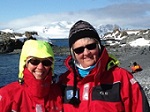 Marisa, we've been back a week and I'm writing to say how wonderful our trip was. Thanks you for all your guidance and planning. Buenos Aires was so interesting. Our tour guide, Alejandro, was top notch-- and very funny. The hotel was in a good location and the all-day tour in Ushuaia was memorable. The ship was well-run and the food was both interesting and plentiful. The crew was professional. The expedition leaders were kind, enthusiastic and very knowledgeable. I can't give you credit for the fantastic weather and incredible scenery but it was an amazing trip. Thank you. - Susan Ogden/Rose Marie Wilson (Akademik Ioffe)
Marisa, we've been back a week and I'm writing to say how wonderful our trip was. Thanks you for all your guidance and planning. Buenos Aires was so interesting. Our tour guide, Alejandro, was top notch-- and very funny. The hotel was in a good location and the all-day tour in Ushuaia was memorable. The ship was well-run and the food was both interesting and plentiful. The crew was professional. The expedition leaders were kind, enthusiastic and very knowledgeable. I can't give you credit for the fantastic weather and incredible scenery but it was an amazing trip. Thank you. - Susan Ogden/Rose Marie Wilson (Akademik Ioffe) Carrie and Justin, I just wanted to send the two of you a message to thank you for all your help putting together our trip to the Antarctic. The trip was absolutely fantastic – definitely the best trip we have ever taken! I would strongly recommend the Akademik Ioffe team to anyone that asks. The places we visited and the excursions we were able to participate in were definitely first-rate, and I would credit the staff for making this happen. They selected great places to visit, and really made each zodiac or on-shore excursion a special experience. The Antarctic is just mind-blowing. We did get south of the Circle – which sounds like it was a bit of an accomplishment – and had really great weather for the entire trip. So again, thanks for making a totally fabulous trip a reality for us. -Ron & Bonnie Milzer (Antarctic Circle Voyage onboard Akademik Ioffe)
- Antarctica - Frequently Asked Questions
- Q: How do I choose an itinerary?A: Antarctica is the trip of a lifetime, offering abundant wildlife and unique landscapes. Travelling to the end of the world is an unparalleled experience. It’s hard to go wrong with any option but for those with specific interests we recommend reviewing our guide to Antarctica Cruises found here or contacting an Adventure Travel Coordinator.Q: Can I make changes or additions to these tours?A: Antarctica cruise itineraries are set and cannot be changed, but you can certainly add pre/post cruise services (hotels, tours, transfers, flights, etc.) in Argentina and Chile. Southern Explorations is happy to assist with any additional services you require.Q: When is the best time to go to Antarctica?A: Travel to Antarctica occurs during the Austral Summer with cruise expeditions departing from late October through March. You may wish to schedule your trip according to what wildlife activities you’d like to observe, or any specific adventure activities you would like to do, such as snowshoeing, skiing, mountaineering, whale watching, and more, which are only offered on certain departures.Q: When is the most affordable time of year to travel to Antarctica? What’s the best way to get a deal on an Antarctica cruise?A: It is a popular misconception that the best way to obtain a deal on an Antarctica cruise is to wait until the last possible moment to book. While this works out sometimes, this scenario is rarer and rarer as Antarctica’s popularity as a tourist destination increases. A few years ago, operators had trouble filling their boats with paying passengers, so last-minute deals were common. Now, most Antarctica cruise departures sell out far in advance, so there is no reason for operators to offer last-minute deals. Currently the best way to obtain a deal on an Antarctica cruise is to book early, as many operators offer early booking discounts.
Generally, it is a good idea to confirm your cruise at least eight months to one year in advance. The time period around the holidays (Christmas/New Year's) tends to sell out further in advance. Fly cruises, during which you fly over the Drake Passage rather than crossing it onboard the vessel, also tend to sell out early, so it is a good idea to book more than one year in advance if you choose this type of cruise.
Prices are higher for travel in late December, January, and early February, as this is high season. Prices are lower early season (November/early December) and late season (late February/March).Q: What can I expect to see at different points during the season?A:- Late October and November: The early part of the season showcases a number of highlights. Landing sites are at their most pristine. The possibility of seeing sea ice is present early on, before it breaks up later in the season. Late October to early November sees Adélie, Chinstrap and Gentoo adult penguins and Antarctic-breeding seabirds starting to come ashore to their breeding sites where they commence courtship rituals and nest building. Shortly thereafter eggs are laid and incubated. Emperor penguins can be seen on the frozen Weddell Sea (visited via helicopter on special Emperor penguin voyages).
Spring flowers begin blooming in the Falkland Islands (Islas Malvinas) and elephant seals are actively courting in South Georgia. South Georgia's female king penguins lay their eggs in November and the parents can be seen "carrying" eggs on their feet so that the parent can shuffle around the colony while the other adult goes out to sea to feed. "Oakum Boys" — king penguin chicks from the previous season — can also be seen in the rookeries. Fur seals litter the beaches in South Georgia with the males aggressive and ready to mate.
- December and January: The increased number of daylight hours brings exceptional opportunities for photographers and non-photographers alike, and the expeditions make the most of the summer weather and continuous hours of daylight. Research activity in the Peninsula at the scientific bases is at its peak. Penguin chicks begin hatching in the Falklands (Islas Malvinas); followed by hatchings in mid- to late-December at sites in the Antarctic Peninsula. Some 30 days after hatching, penguin chicks can be found in "crèches," resembling a nursery of sorts, which leaves both adults free to replenish their food supply. An exciting time of this part of the season is when the parent returns with food and the hungry chicks are persistent in being fed, running after the parent (or any adult penguin with food) in a "feeding chase." Whale sightings of baleen and toothed whales escalate in the Peninsula area. Seal pups can be seen on the beaches in South Georgia. Sea ice is also beginning to break up, which allows for the possibility to begin to access to rarely visited sites in the Weddell Sea, Ross Sea and within the Antarctic Circle.
- February and March: Sightings of whales are at their peak in the Peninsula and an increasing number of fur seals can be found along the Peninsula and offshore islands. Young fur seals are also quite playful in South Georgia. Penguin colonies are very active with the penguin chicks beginning their molt - losing their fuzzy down and developing their adult plumage. During this timeframe, the parents will abandoned their chicks, and return out to sea to feed and fatten up for their own molting stage. Most colonies (Adélie, Chinstrap and Gentoo) are nearly vacated by the end of February to early March. Blooming snow algae is prevalent and receding pack ice has reached its peak for the season, allowing for easier exploration within the Weddell Sea, Ross Sea and Antarctic Circle.
Q: What is the weather like in Antarctica?A: Antarctica is the highest, driest, windiest, coldest place on earth, but keep in mind that all tourism trips occur during Austral summer. The average summer temperature in the Antarctic Peninsula area is around 25 to 32°F (-4 to 0°C), although sometimes it will feel substantially colder due to the wind chill factor and water splashing up while riding in zodiacs. You can expect to encounter varied conditions including rain, snow, high winds, bright sun, and fog.Q: What is a typical day like in Antarctica?A: All three meals are eaten on board the ship. After breakfast, you will head out for your morning excursion for 2 to 5 hours, then get back on board to eat lunch while the ship navigates to the next landing site. Here you will once again disembark on land for 2 to 5 hours before dinner.Q: How physically fit do I need to be to enjoy a trip to Antarctica?A: You do not need to be extremely physically fit to travel to Antarctica, but should be comfortable walking short distances over uneven terrain, including snow, ice, and rock. Most ships also have a steep metal gangway that you must descend and ascend to embark/disembark the small zodiac boats that ferry passengers to shore. Your guides will always be there to assist you.Q: While in Antarctica, will I get to get off the ship and walk around on land?A: Yes! You will make landings every day you are in Antarctica, and the cruise staff will ensure you spend as much time on land as possible. This is true of every Antarctica cruise we offer. There is no cruise during which you stay onboard the ship the entire time.Q: How much time do I need to visit Antarctica?A: Standard Antarctic Peninsula cruise itineraries are 10 to 12 days long. The shortest Antarctica voyage we offer is 6 days long, with our longest being 32 days. Please inquire for details about specific voyages.Q: What are your booking and cancellation policies?A: All Antarctica cruises have different deposit policies, with the deposit amount typically ranging from $1500 per person to 25% of the total trip costs. Final payment is usually due between 100 days and 120 days prior to travel.
Antarctica cruise cancelation policies vary widely from ship to ship. The cancelation penalty from the time of booking up until 90 or 120 days prior to departure can be as little as $500 per person or as much as $5000+ per person. Generally, all cruises will have a 100% cancelation penalty within 90 days of departure. Please inquire for details about cancelation penalties for specific ships.Q: What kind of accommodations can I expect?A: Accommodations and amenities on board Antarctica cruises vary from simple 3-star to luxury 5-star. Please inquire for details.Q: Do tours include airfare?A: Most Antarctica cruises do not include any airfare, though some include roundtrip flights from Buenos Aires to Ushuaia, and “fly cruises” include flights from Punta Arenas, Chile to Antarctica or to the Falkland Islands. Southern Explorations is happy to arrange any flights you require within Argentina or Chile. Please inquire about airfare inclusions for specific cruises.Q: How many people are on your tours?A: The Antarctica cruise ships we offer range in size from a capacity of 54 to 200 passengers. “Mega ships” with thousands of passengers on board are not allowed to make landings in Antarctica, so all vessels are relatively small.Q: Do I need travel insurance, what all do I need, and how much does it cost?A: All Antarctica cruises require that passengers purchase travel insurance covering emergency medical evacuation and repatriation. The cost of medical evacuation transport from Antarctica is high, and as it is the responsibility of the traveler, this coverage is imperative. Though trip cancellation insurance is not required, it is highly recommended. The cost of travel insurance varies from individual to individual and depends on many factors, such as cost of trip covered, age of traveler, where you live, etc. We recommend contacting Berkshire Hathaway or Travel Guard, or click here to compare other trip insurance companies.Q: Where do Antarctica cruises begin and end?A: Most Antarctica cruises begin/end in either Ushuaia, Argentina or Punta Arenas, Chile. Occasionally cruises depart directly from Buenos Aires, Montevideo, or other port cities, but this is rare. When departing from Ushuaia, you board the cruise at the pier in town and cross the Drake Passage onboard the vessel. Trips departing from Punta Arenas are "fly/cruise" programs that fly you (one-way or both-ways) by small aircraft to the South Shetland Islands, just off the Antarctic Peninsula to embark your expedition ship there. There are also some cruises that start with a flight from Punta Arenas to Stanley in the Falkland Islands. Please check your itinerary for any inclusions, or needed additions, such as pre- or post-trip hotel nights and domestic flights to your embarkation cities. Southern Explorations can book any needed pre- or post-trip hotels, domestic flights, tours and transfers, and include them within your trip costs.Q: What can I expect while crossing the Drake Passage? Will I get seasick?A: The Drake Passage is the body of water between Cape Horn (the southernmost tip of South America) and the Antarctic Peninsula. On most Antarctica cruise ships it will take a full two days to cross the Drake Passage. This passage has some of the roughest recorded sea conditions in the world (the “Drake Shake”), but it can also be pristinely calm (the “Drake Lake”). Conditions in this waterway can vary at any time of year depending on weather, and it is impossible to predict how rough it will be in advance. Some passengers experience seasickness, and others do not. It is advisable to come prepared by packing motion sickness remedies. All ships also have doctors onboard, and these medical professionals are extremely adept at assisting passengers with any seasickness concerns. Once in Antarctica, sheltered waters are normally encountered with little problem for rough seas. NOTE: There are also options to do what is called a "fly/cruise" program where you fly by small aircraft to the South Shetland Islands, just off the Antarctic Peninsula and then join up with your expedition cruise ship there, thus avoiding crossing the Drake Passage onboard the vessel.Q: Can I bring my photographic drone to Antarctica?A: The governing body of Antarctic tourism is called the International Association of Antarctica Tour Operators (IAATO) and Southern Explorations is a member of this organization. IAATO members have agreed that they will not allow the recreational use of UAVs (drones) in the unique, and often wildlife rich, coastal areas of Antarctica. Through the unique global partnership that is the Antarctic Treaty system, the entire continent is formally designated as a 'natural reserve, devoted to peace and science'. Antarctica is regarded as the last great wilderness on our planet, still pristine with wildlife and landscapes that show little evidence of direct human activity. Visiting and operating in an environment like this comes with a responsibility to do so carefully and with minimal impact. UAVs are a relatively new phenomenon and IAATO Is therefore taking a cautionary approach, as it is possible they could have a negative impact on the environment. Also, as you can imagine, many drones flying over a penguin colony would not only be potentially detrimental to the birds (adult penguins are distracted by drones, which allows a Skua to swoop in and eat their eggs or swipe one of their chicks), but will also greatly diminish the experience of other passengers seeking to enjoy the beauty and solitude of the Seventh Continent. So, please, leave the drones at home!Q: Will I get more information on packing, vaccines, currency, electricity, etc.?A: After booking, you will receive a link to our online trip portal which includes all of the need-to-know information that is specific to your itinerary. This includes packing lists, restaurant recommendations, tipping guides, FAQs, vaccine recommendations and currency information. Your Adventure Travel Coordinator will also be a great resource for any other information you may need. - Late October and November: The early part of the season showcases a number of highlights. Landing sites are at their most pristine. The possibility of seeing sea ice is present early on, before it breaks up later in the season. Late October to early November sees Adélie, Chinstrap and Gentoo adult penguins and Antarctic-breeding seabirds starting to come ashore to their breeding sites where they commence courtship rituals and nest building. Shortly thereafter eggs are laid and incubated. Emperor penguins can be seen on the frozen Weddell Sea (visited via helicopter on special Emperor penguin voyages).


 The 345-ft M/V Expedition was built in Denmark in 1972, specifically designed for expedition travel, and completely refurbished in 2009. Safe, stable, and fast, she is among the most comfortable and spacious of ships in her class and is ideally suited for exploring the ice wilderness of Antarctica. She accommodates 134 passengers, and provides, comfort and expertise within an intimate small-ship cruising experience.
The 345-ft M/V Expedition was built in Denmark in 1972, specifically designed for expedition travel, and completely refurbished in 2009. Safe, stable, and fast, she is among the most comfortable and spacious of ships in her class and is ideally suited for exploring the ice wilderness of Antarctica. She accommodates 134 passengers, and provides, comfort and expertise within an intimate small-ship cruising experience.